A patchwork of marked bicycle tracks on the main road and random stretches on bumpy sidewalks lead us out of Budapest. The fancy bicycles disappear quickly. Eventually the city is behind us, and we find a little road towards Jaszbereny. Corn and grain fields are interrupted by shrubs and trees. In the villages there are cottages with big greenhouses and stork nests. Late in the evening we arrive at a camping in Jaszapati. Friendly German campers point us to the attached thermal bath on the next morning. We get attached to the idea of camping near thermal pools, and manage to stop only on such campings on our way to Romania. We cross the Hortobagyi National Park with its many lakes and flooding areas, a big sanctuary not only for migratory birds. The land is flat, cherries are ripe. We make good mileage. Hajduszoboszlo has the biggest thermal bath in Hungary, and the perhaps most expensive campground in Hungary. Last day in Hungary – we are off the tourist tracks where coffee costs like 30 cent. Where villagers carry their shopping (10 liters of soft drinks in big plastic bottles plus two big shopping bags) for some 20 kilometers to their homes. Where there is a stork nest on almost every farmhouse, and I get a feeling the storks belong to the families.
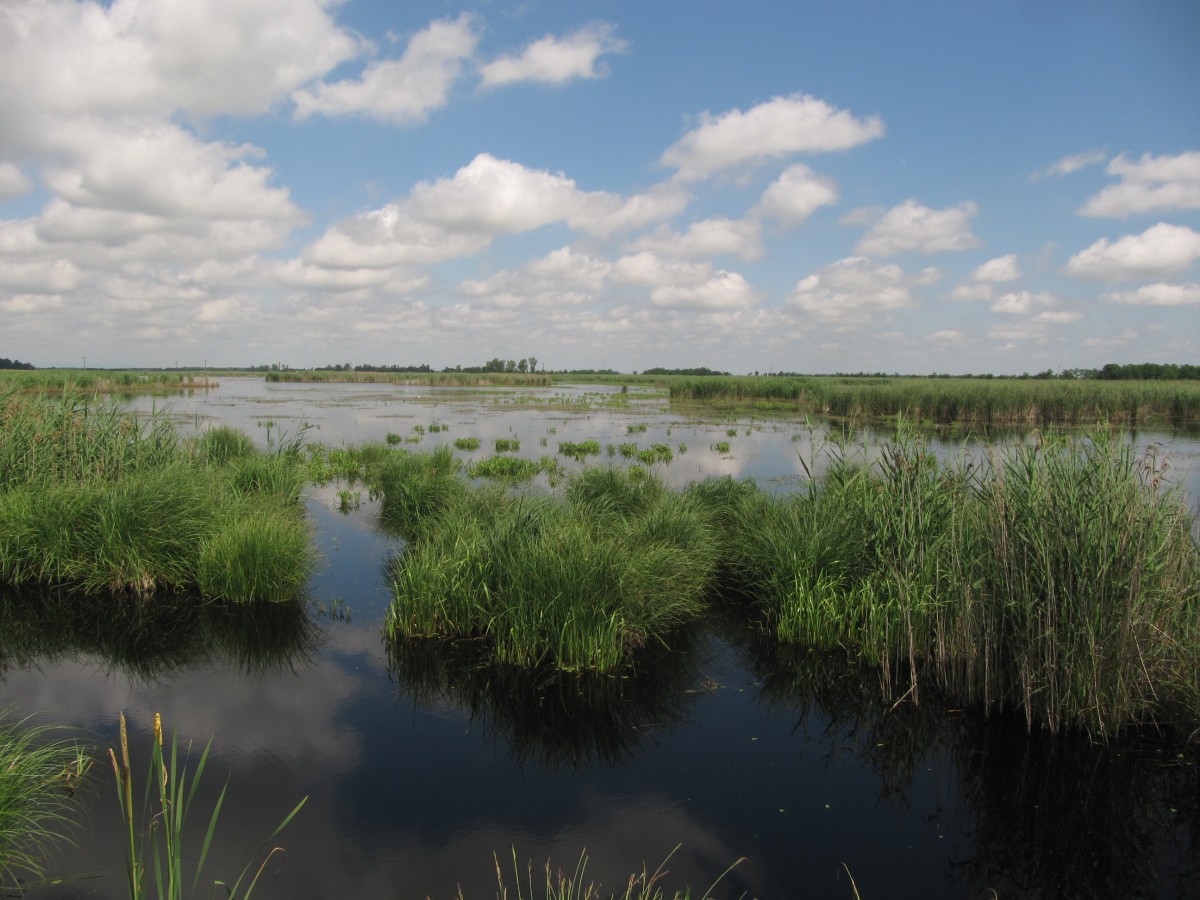
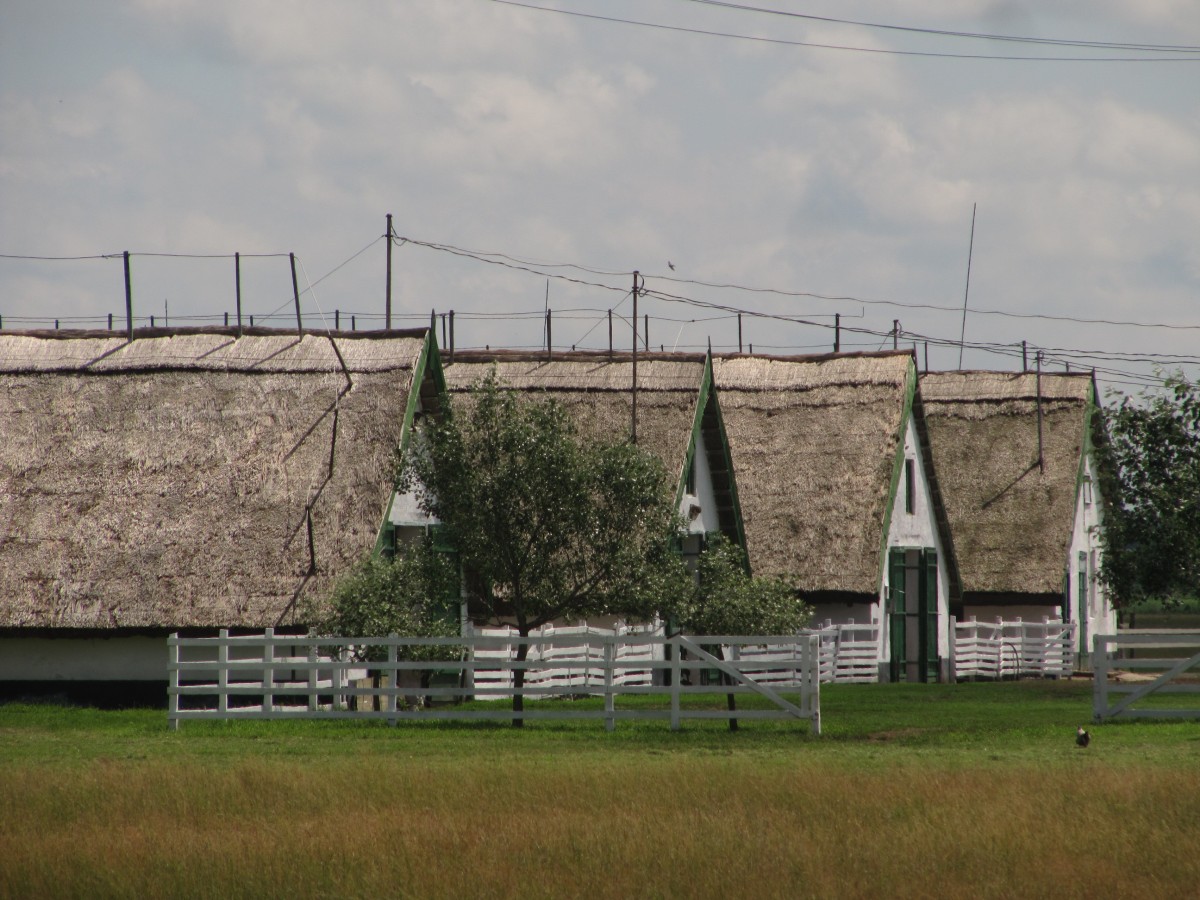
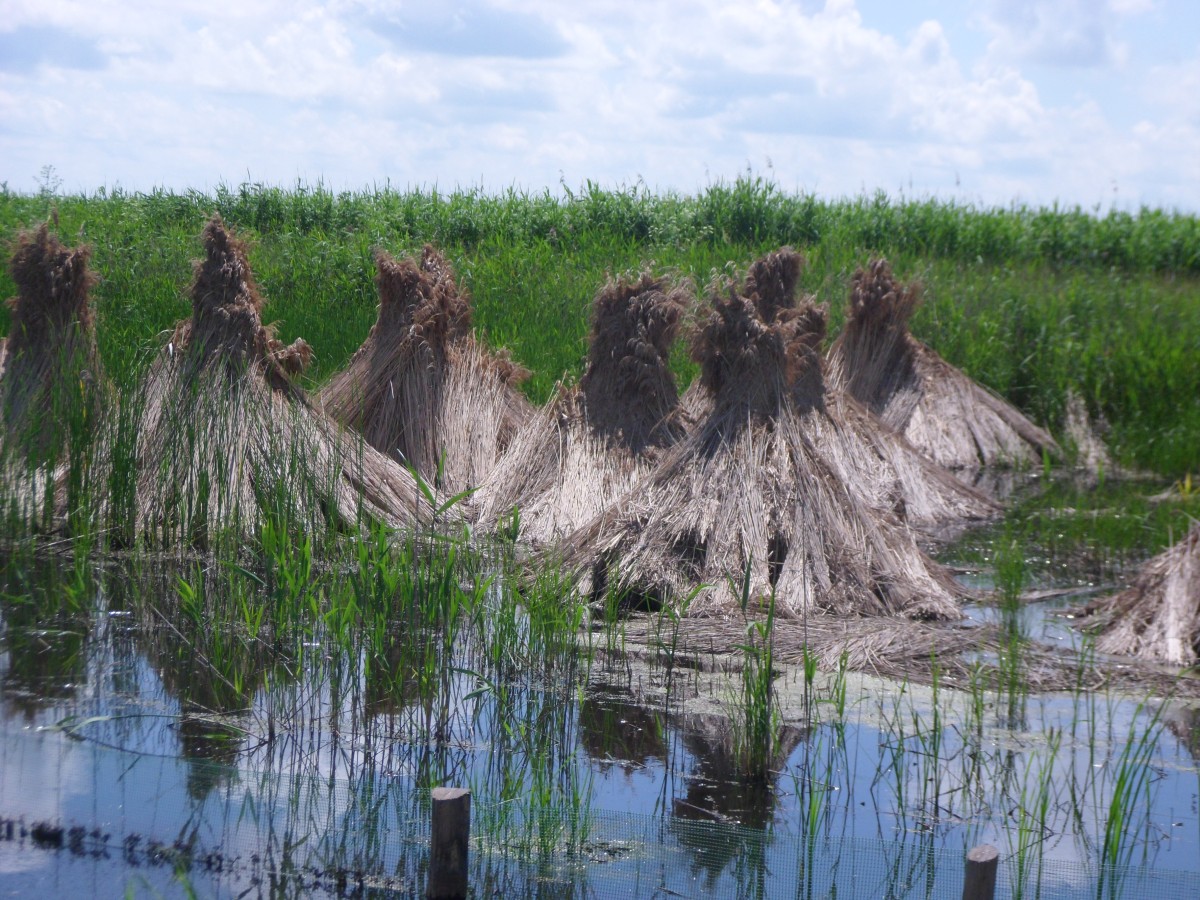
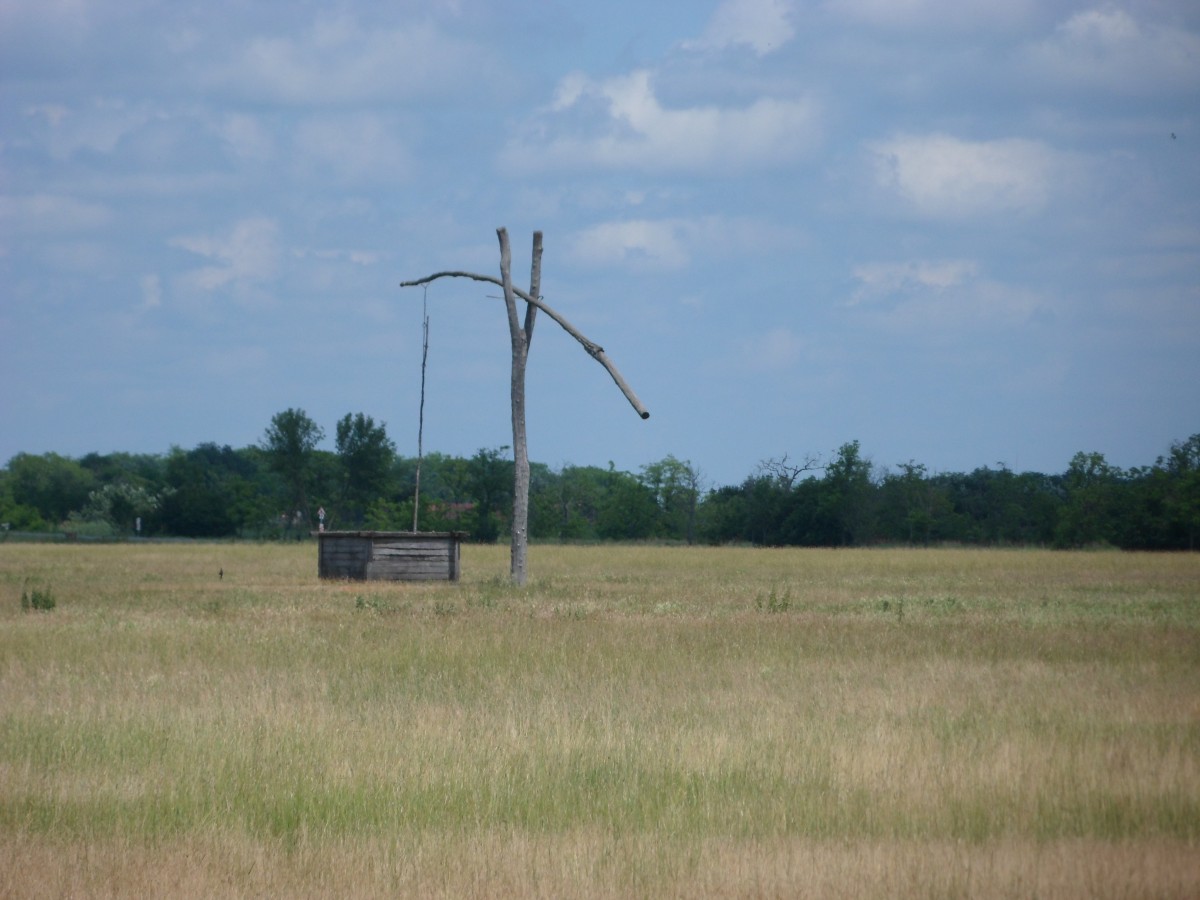
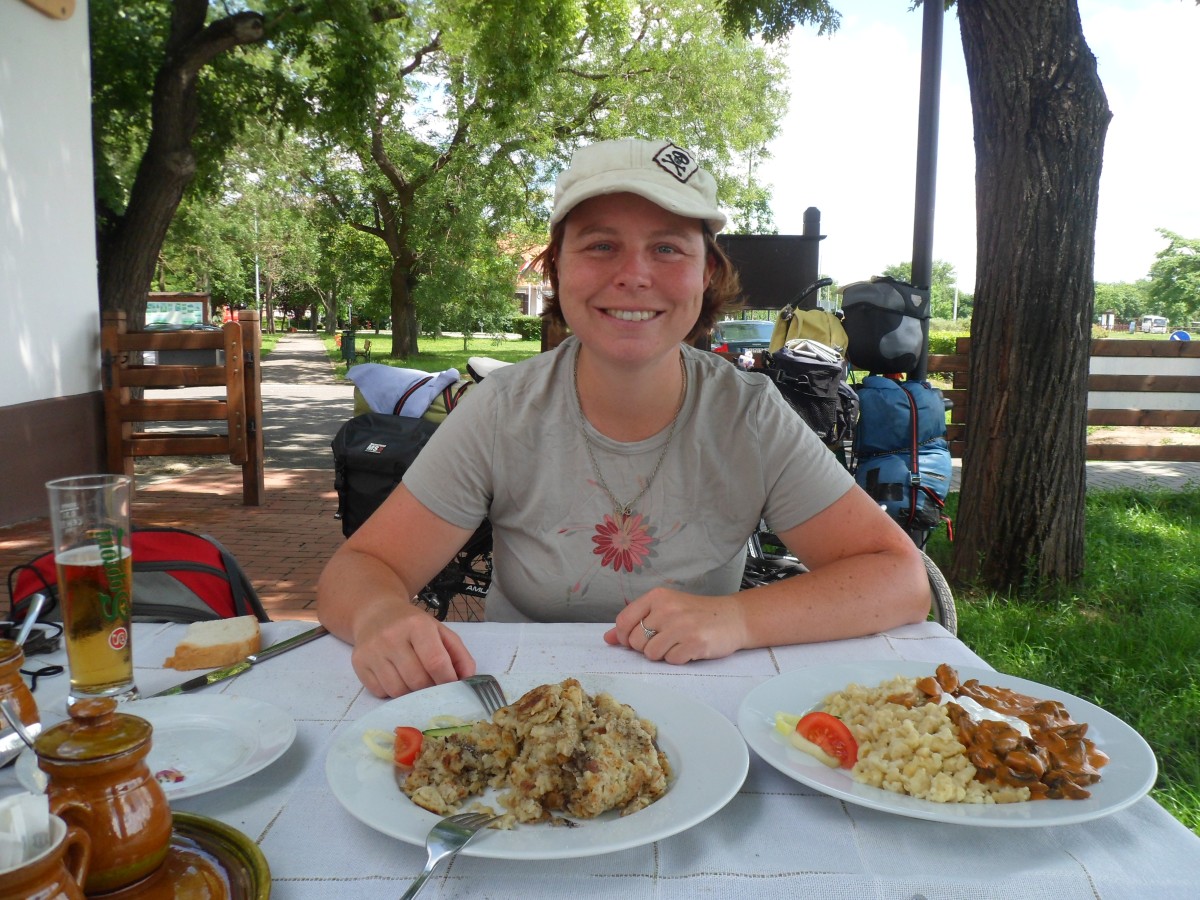
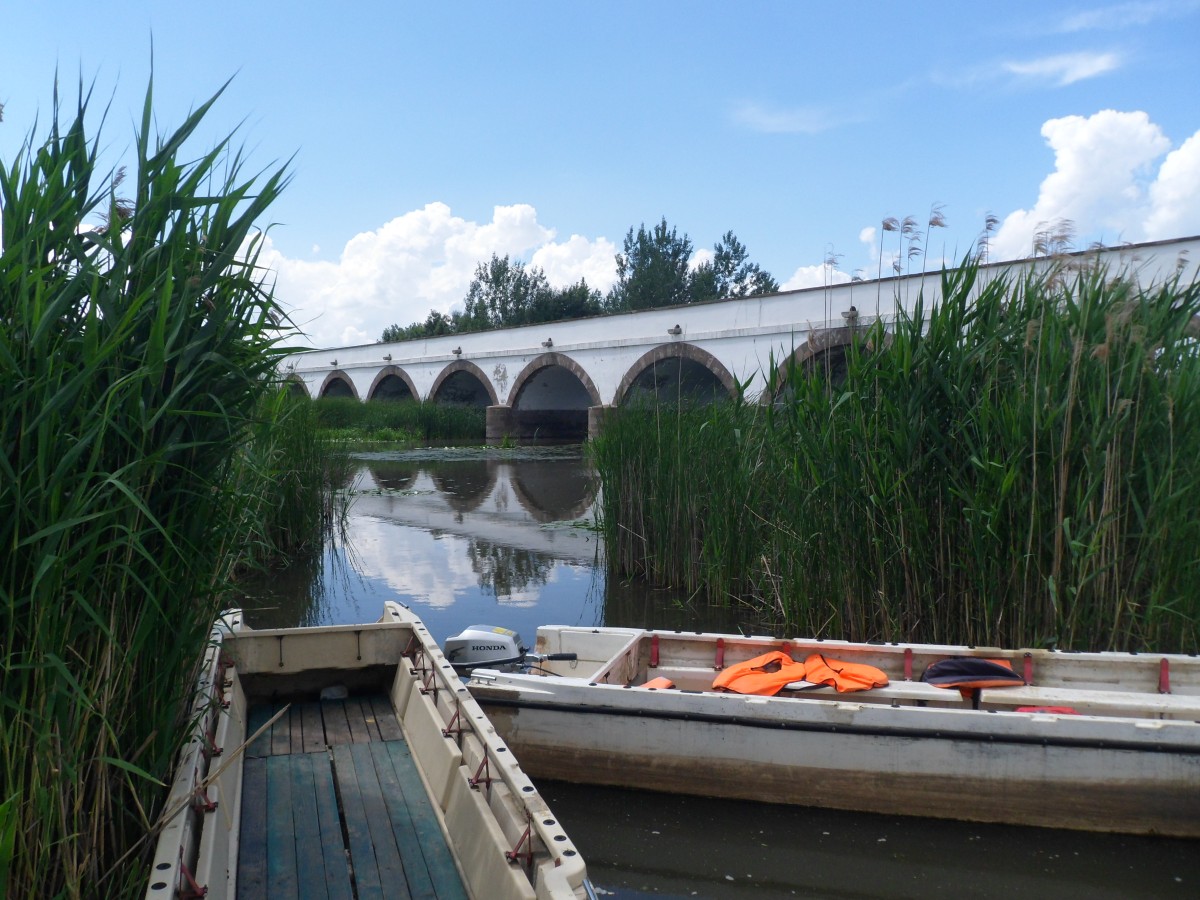
Hortobagyi National Park (Hungary)
And then, we are on the border that isn't really a border anymore since Romania belongs to the EU. Goats weed on a railroad. A few kilometers later we pass the first Orthodox Church, a white building with silver roof and its unique bell tower style. We arrive in Oradea a little later. The communist style suburbs with its aged and dark gray 5-floor chicken farms (ehh living quarters) are decorated by colorful advertisements. The city center with its many tall 19th-century buildings is beautiful - e.g. the town hall, the splendid hotel across the road and the nearby Church of the Moon. Oradea has once been an important strategic spot during the centuries, and therefore hosts the ruins of a once mighty fortress. Restoration and new construction work goes on everywhere in town. We can feel the boom, can imagine the past and future prosperity. There is a lot of Hungarian influence here in the area, which helps us communicate. Plus, the first two people we really spoke to, would talk French and Italian in addition. A Swiss organic-garlic farmer gives us a lot of funny stories about Romania.
The E79 takes us out of town and gets very busy when the motorway joins in. We ask a young man for alternatives. He shows us his black oily hands and mourns about his "shit country". Apparently he broke his car somewhere nearby. Little later this major road is less paved than pothole covered, with all the trucks and cars and horse carts maneuvering around them. We find a bypass road via Holod through the hills of rural Romania with small farmhouses with stork nests and fields and meadows.
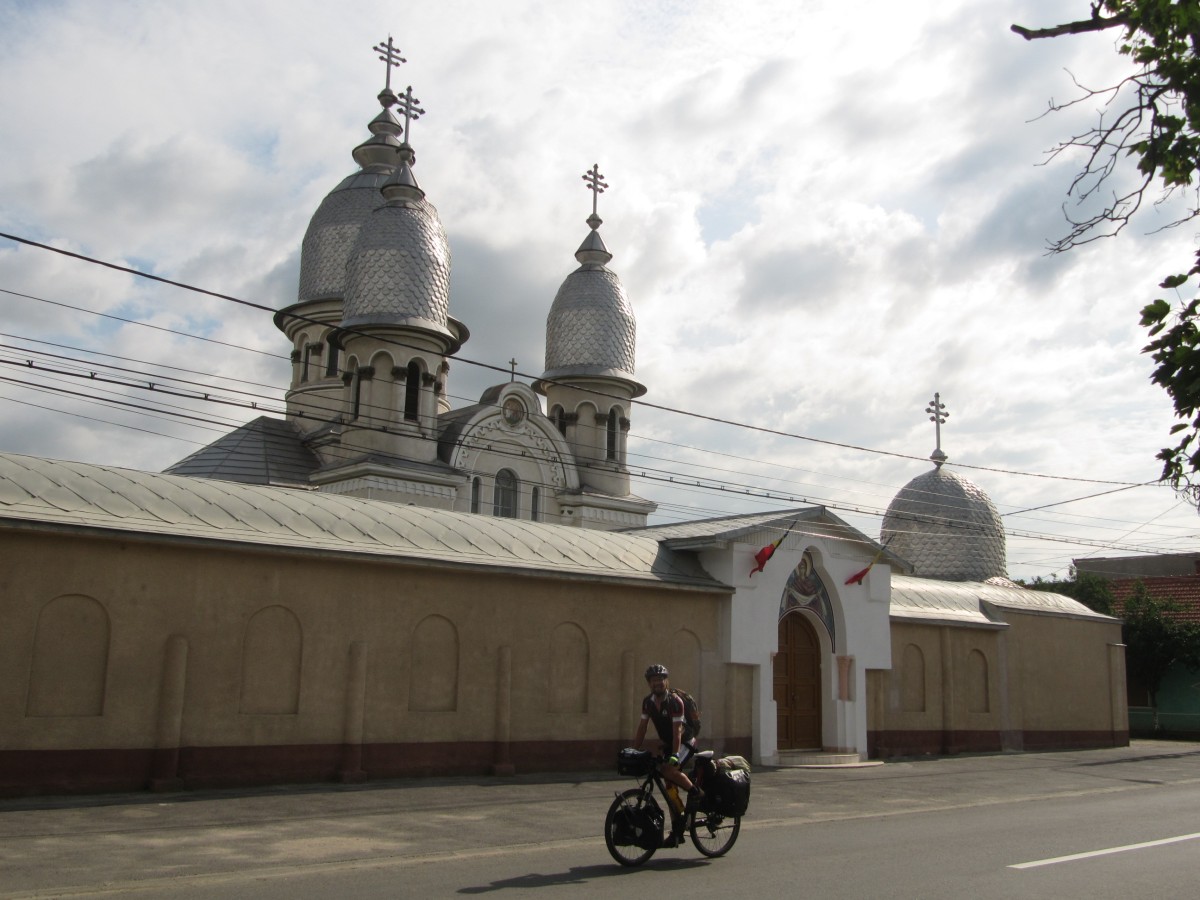
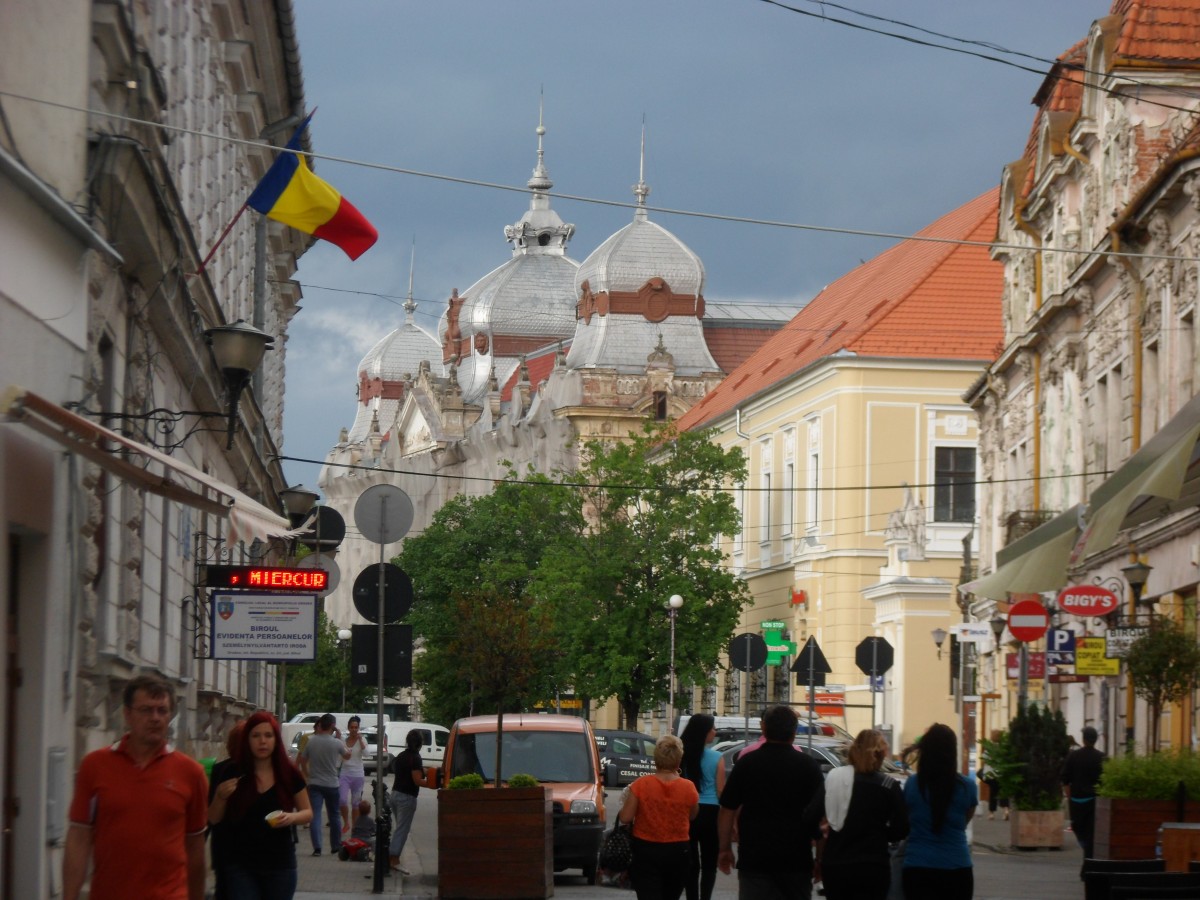
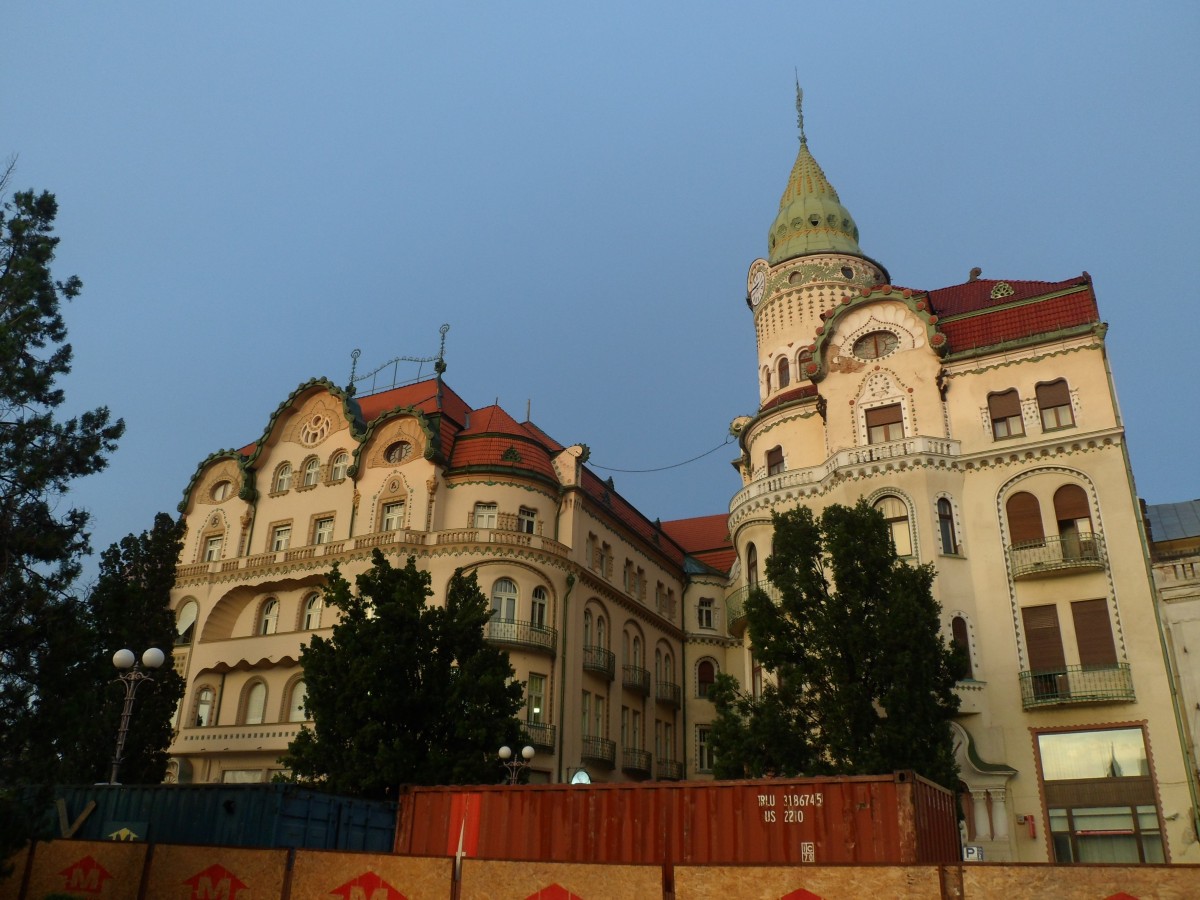
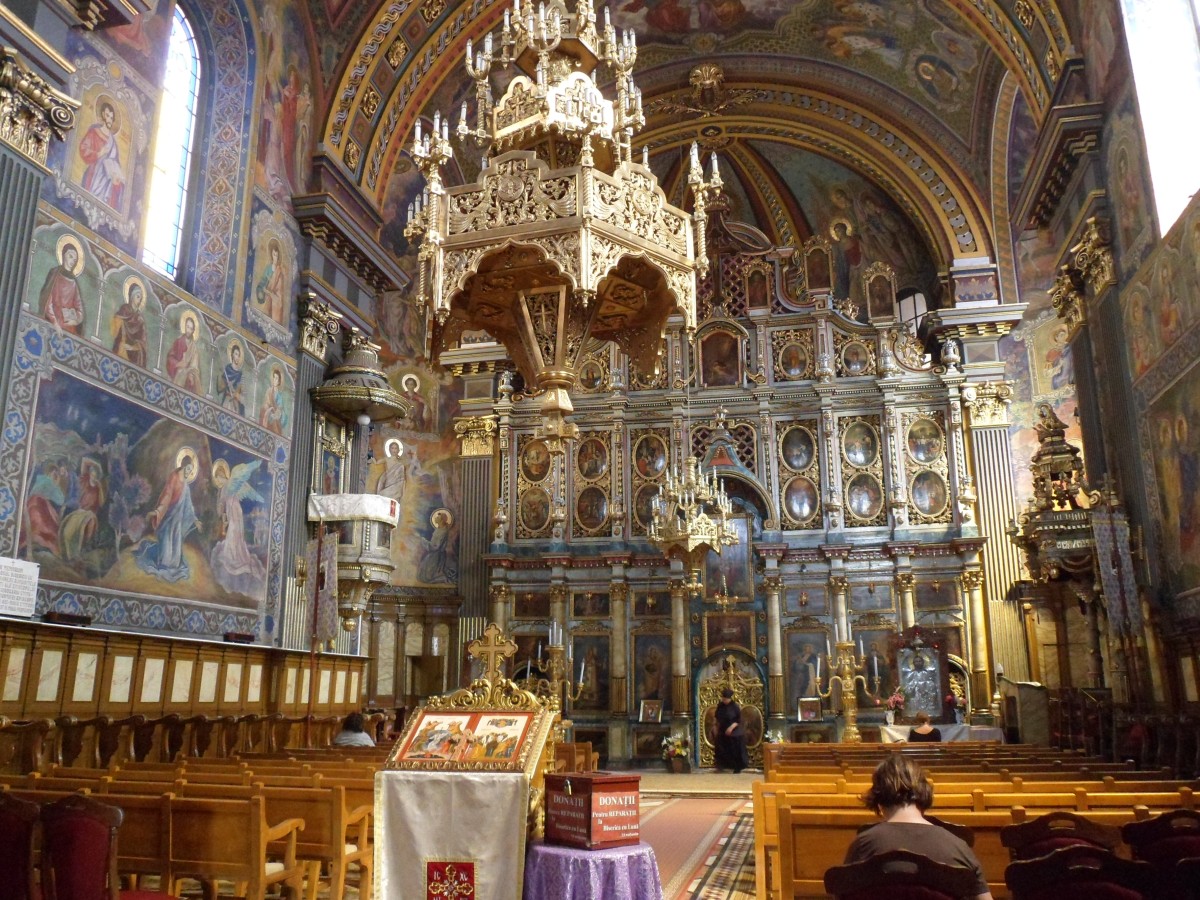
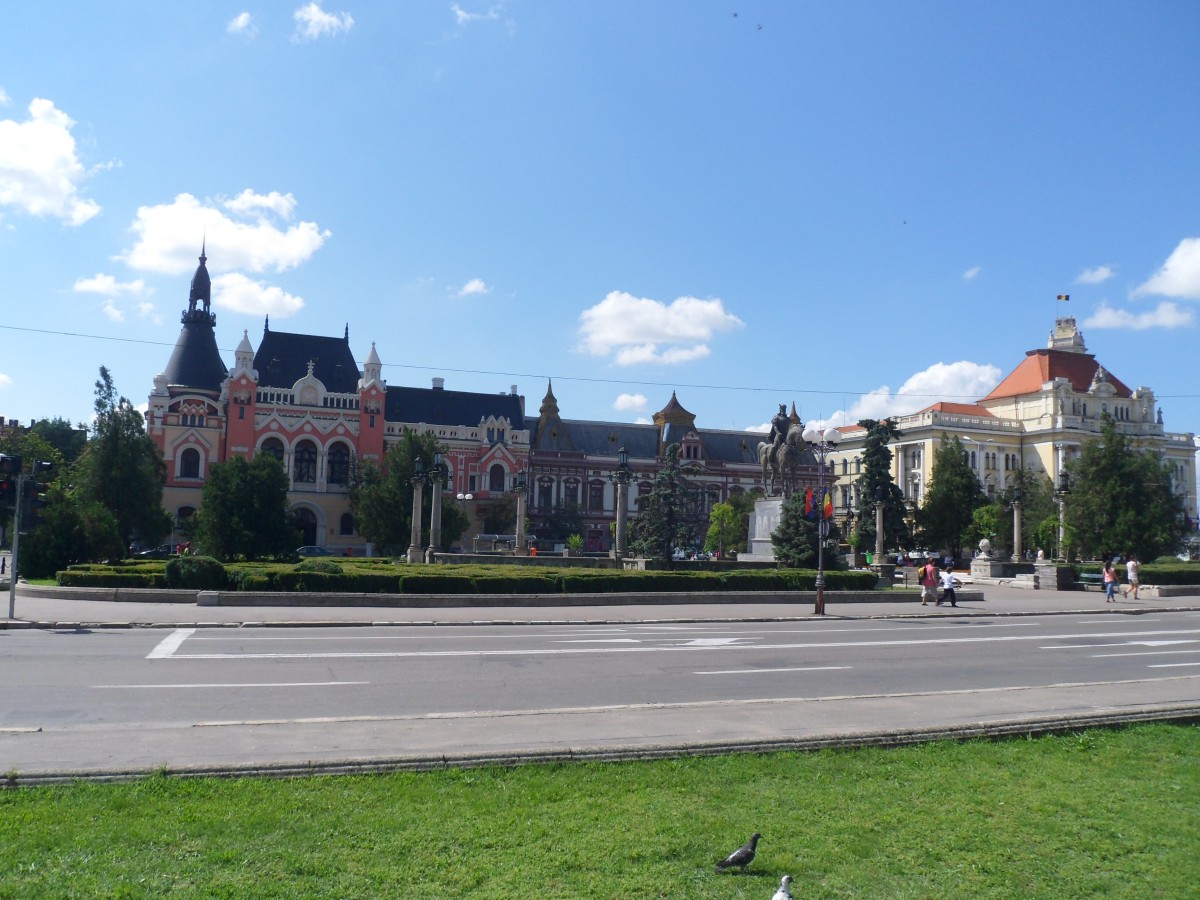
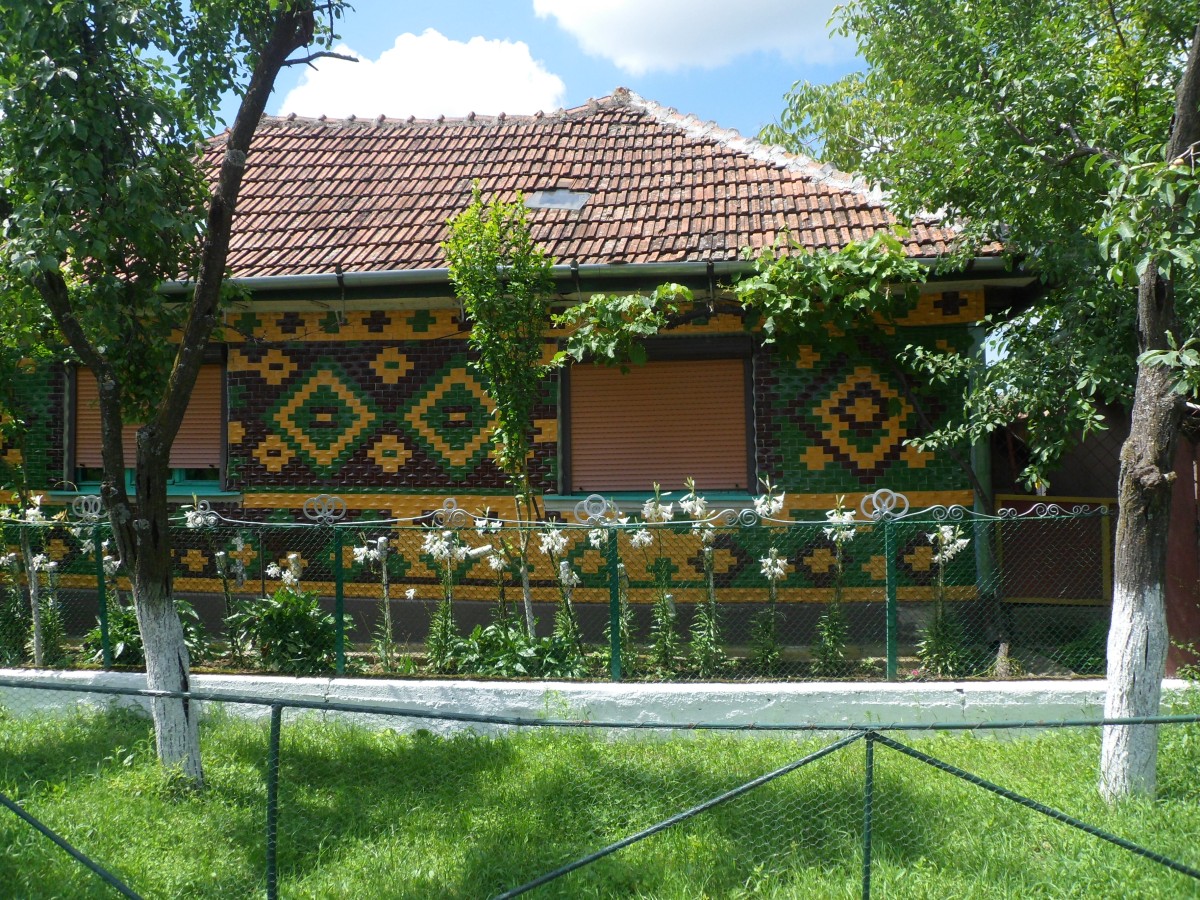
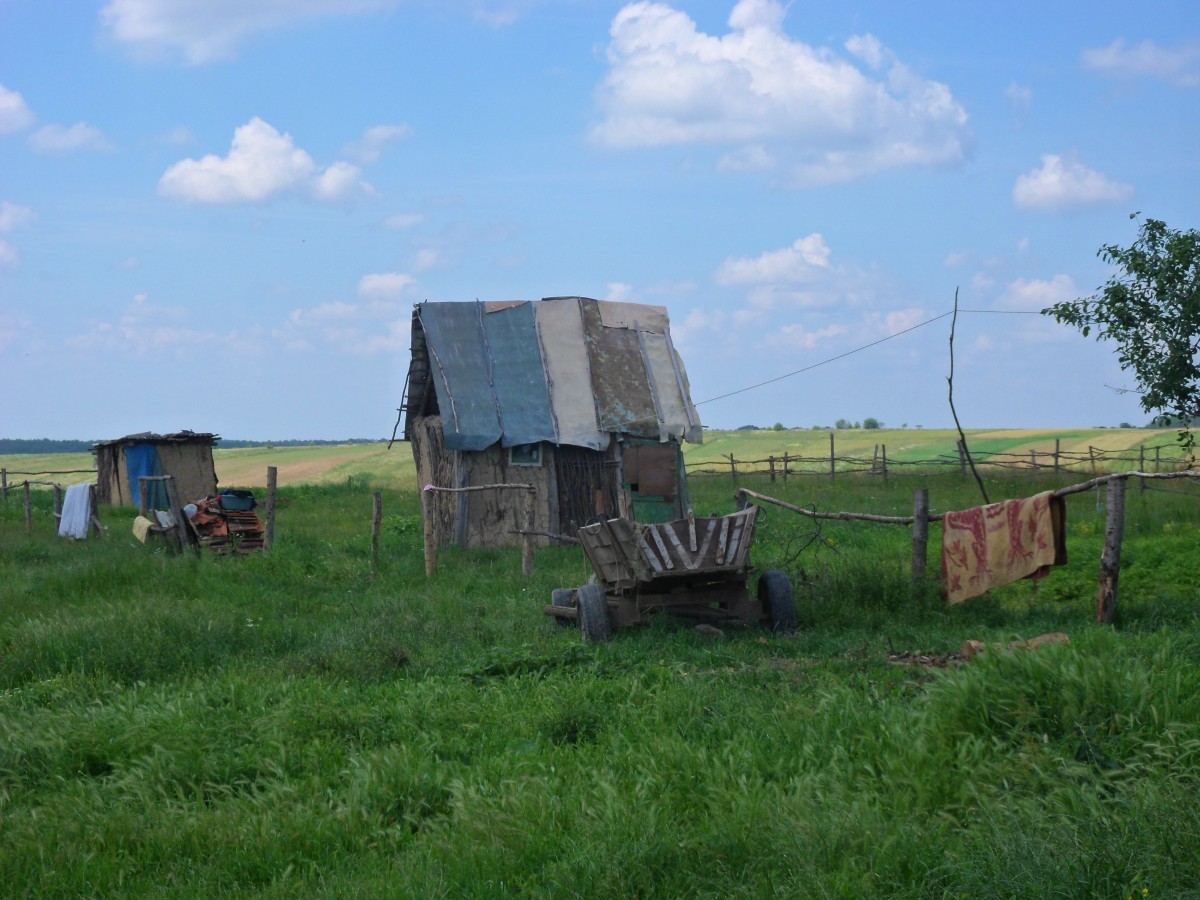
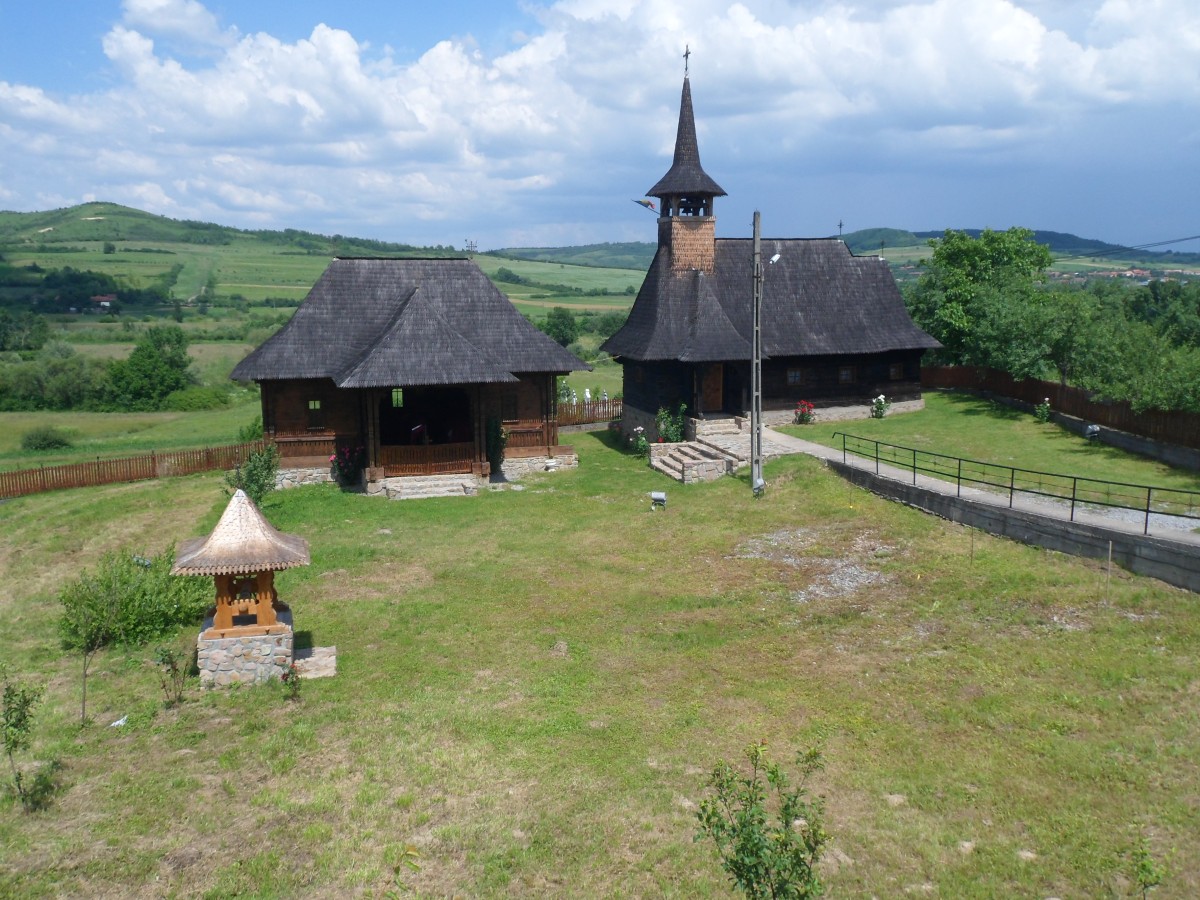
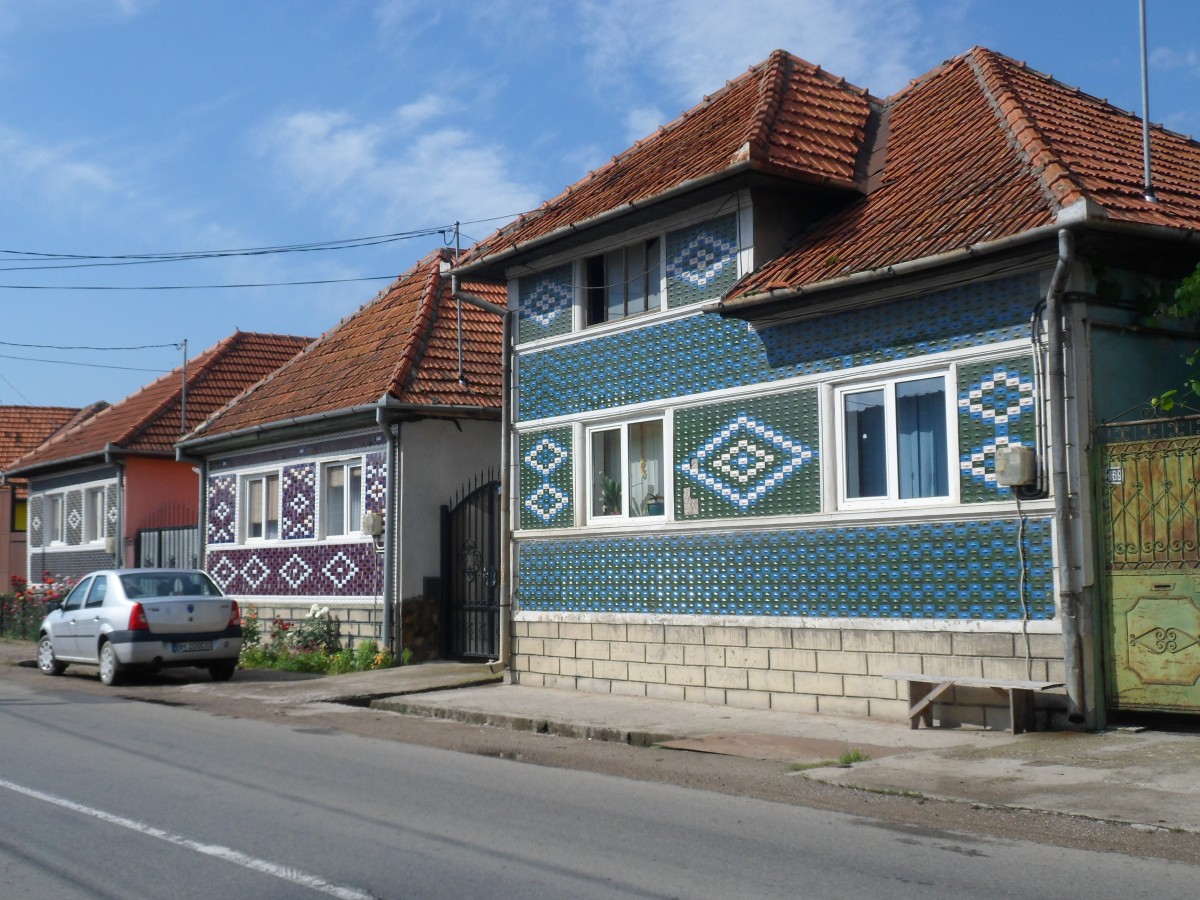
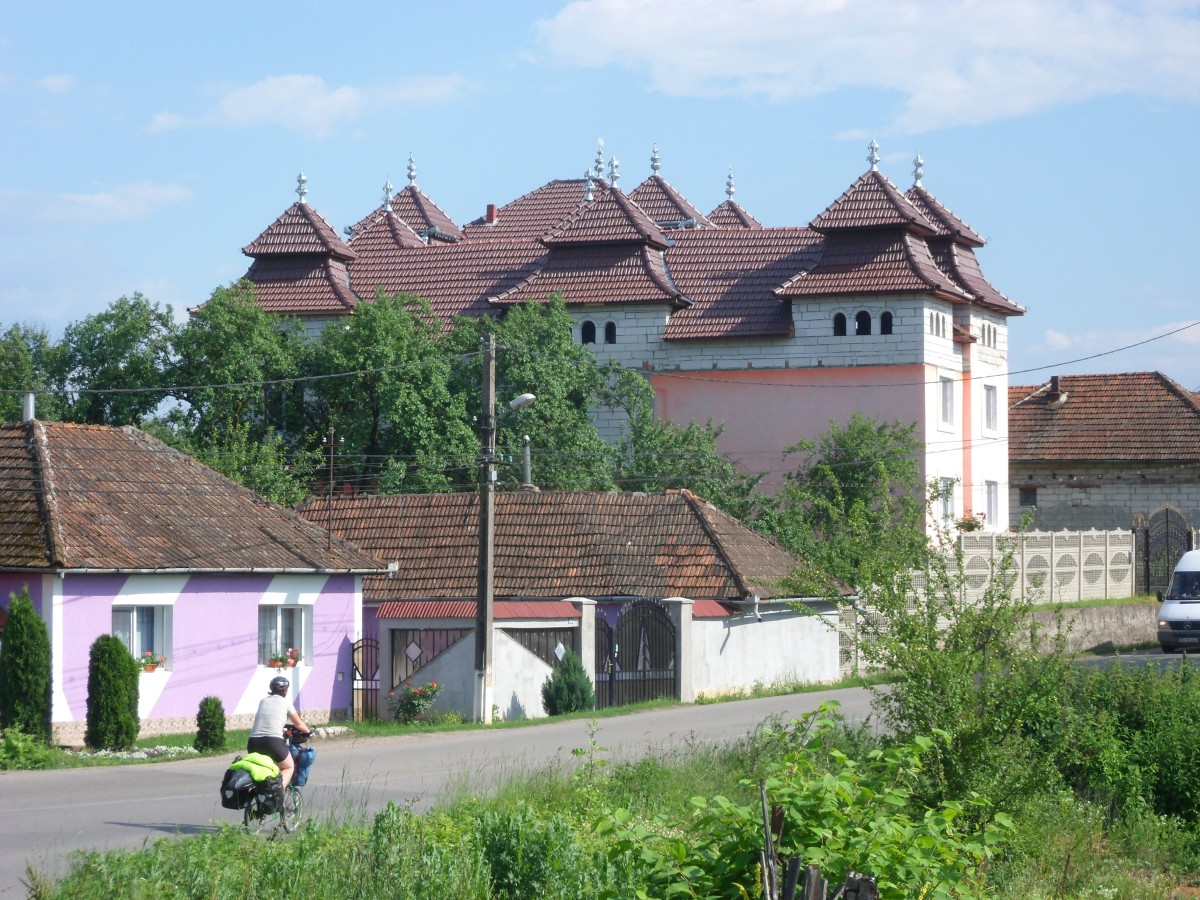
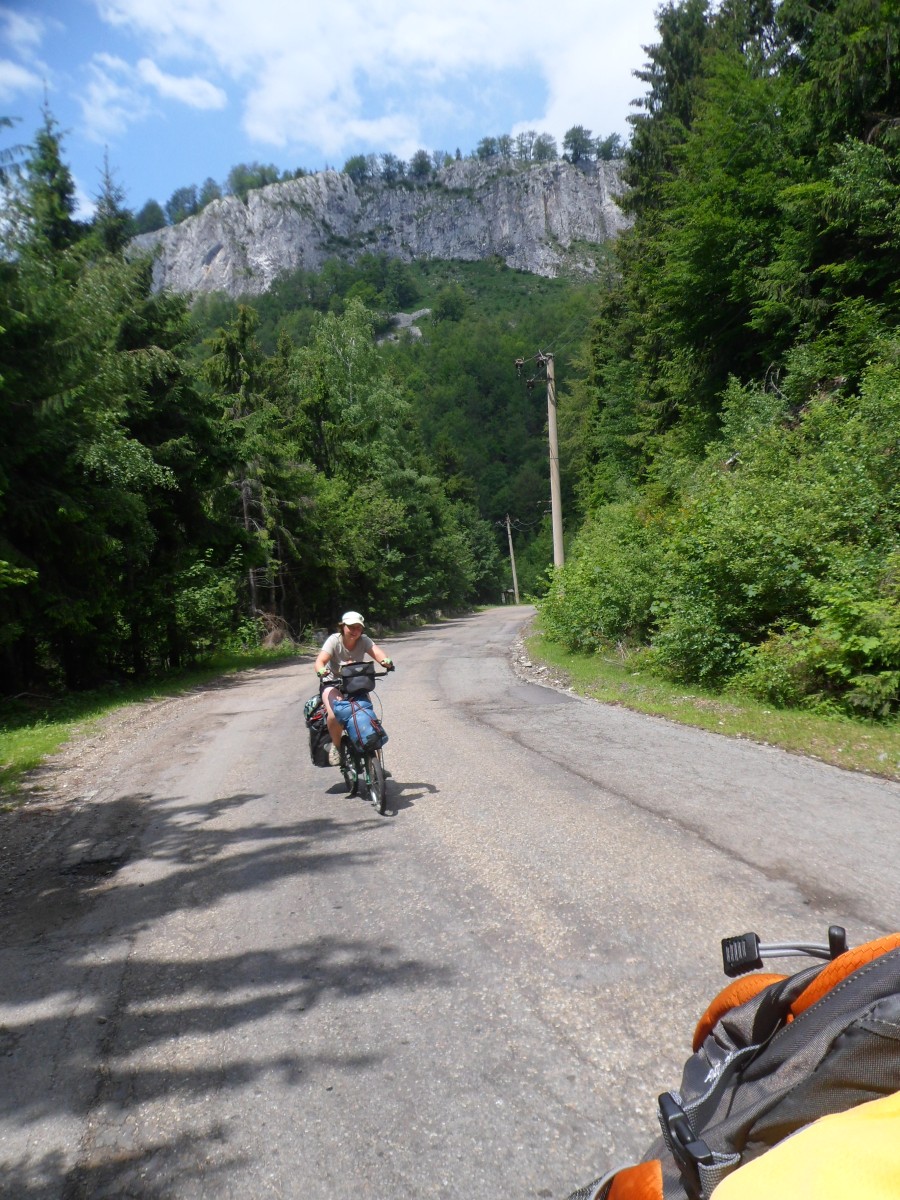
Oradea and Bihor countryside in Romania
From Stej, there is the scenic route 75 through the Apuseni Mountains into Transylvania. We climb up the switchbacks through the beautiful forest up to 1200 meters. At times, Kathrin finds us some wild strawberries. The road sides are limited with brick walls instead of metal barriers, and the limestone mountain tops. Just behind the peak we enter Var Top, a Romanian version of winter holiday and ski resort with building sites everywhere. From there we follow the river Aries through its valley to Garda de Sus, where we camp for 10 Lei (2 Euro) a night. The contrast of a white painted church with silver roof beside a wooden church in the narrow valley is awesome. The paintings in the church display holy men, devils and all sorts of wild creatures, the latter feasting on human body parts. On the first resting day, we visit the nearby gorge with a cave, and chill in an underground limestone spring. On the following day, we cycle up a steep road to visit the famous Scarisoara cave - a giant 3000 year old ice block in a mighty hole. Beautiful views and alp feelings at 1200 meters above sea level.
Our fascination for Romania and its beautiful nature keeps growing and growing on our way down the amazing Aries valley. Steep rocky cliffs, small waterfalls, lush oak and beechwood forests. Wooden monasteries with long bearded priests wearing long black coats and black hats despite the heat. Summer has definitely kicked in and we are grateful for every opportunity to dip in fresh mountain creeks. A dozen man sit under sun roofs in front of the magazines in every village, sharing their 2.5 liter bottles of beer at any time of the day. Finding a restaurant is way more difficult. Still some of the famous wooden cottages are left.
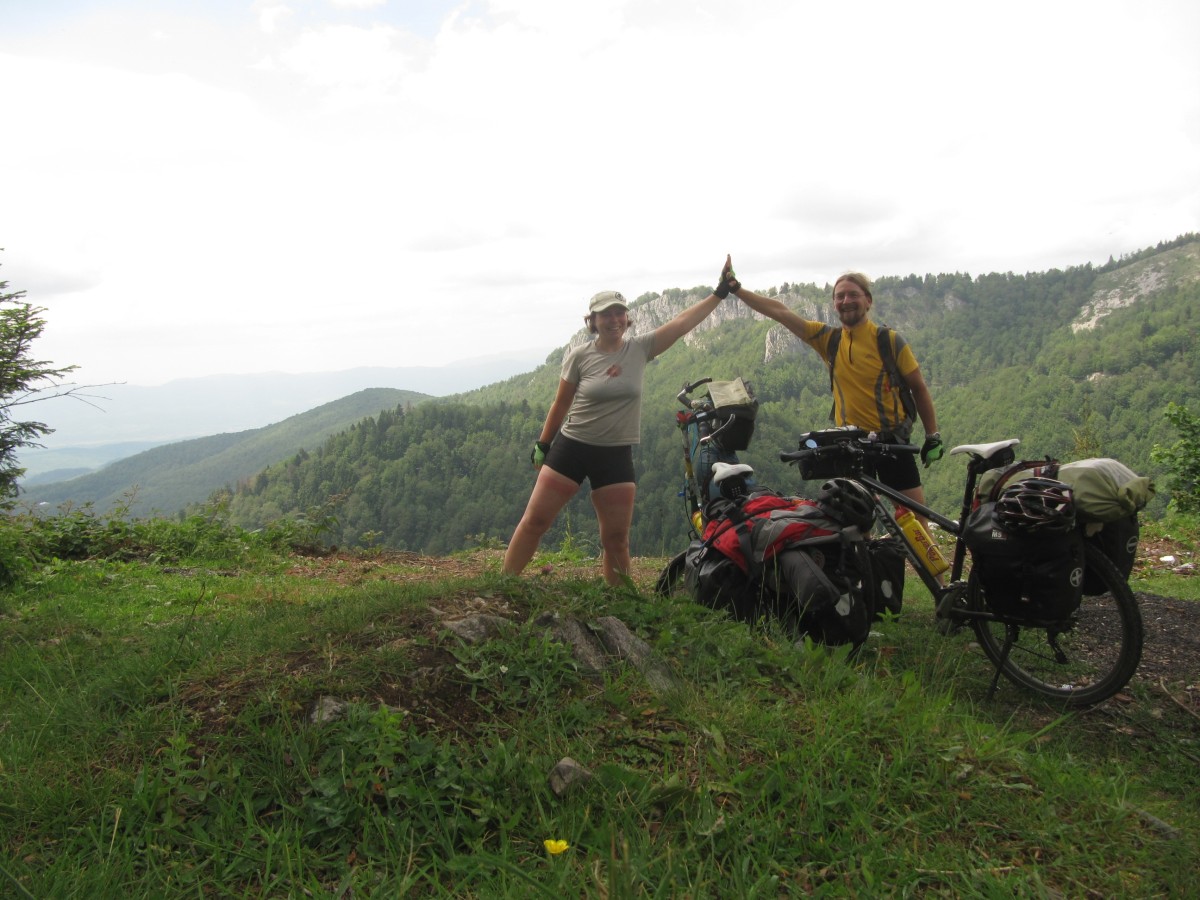
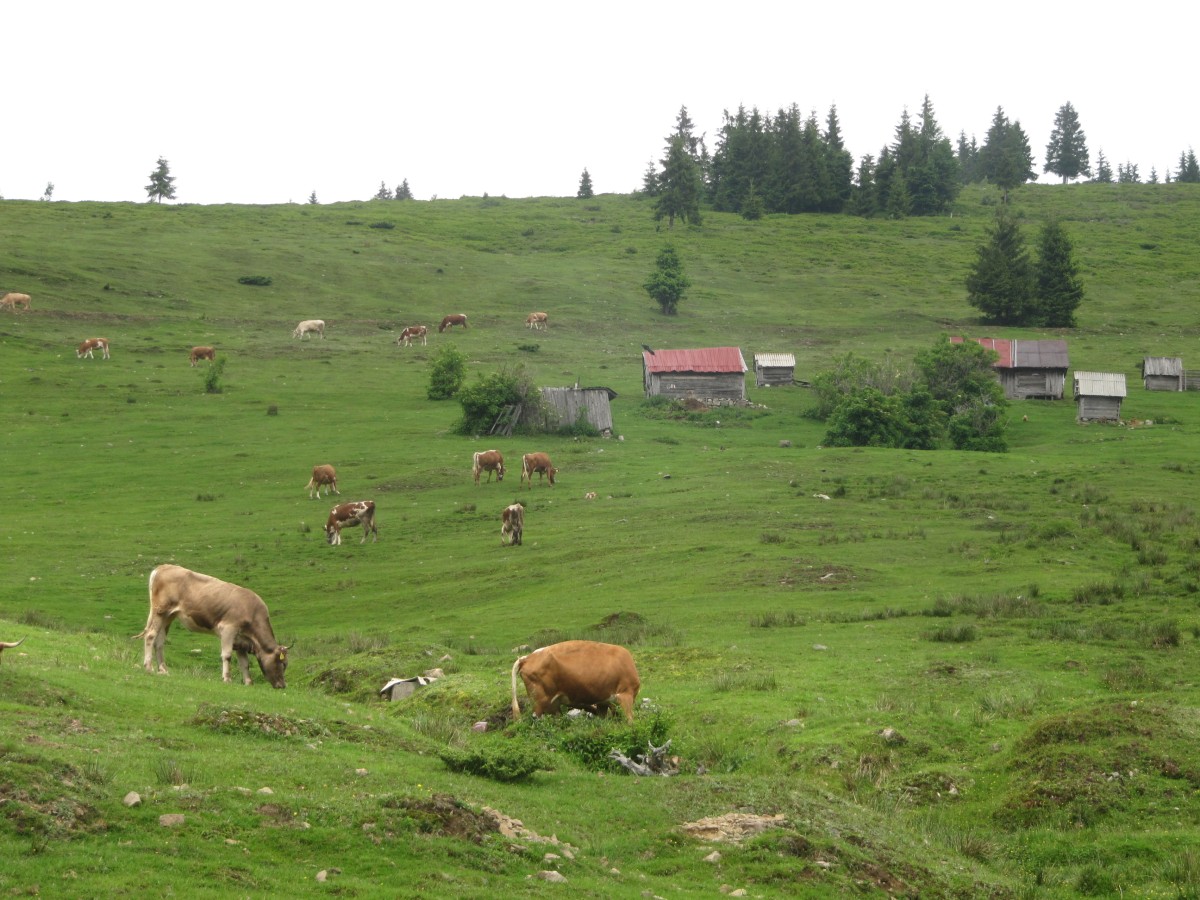
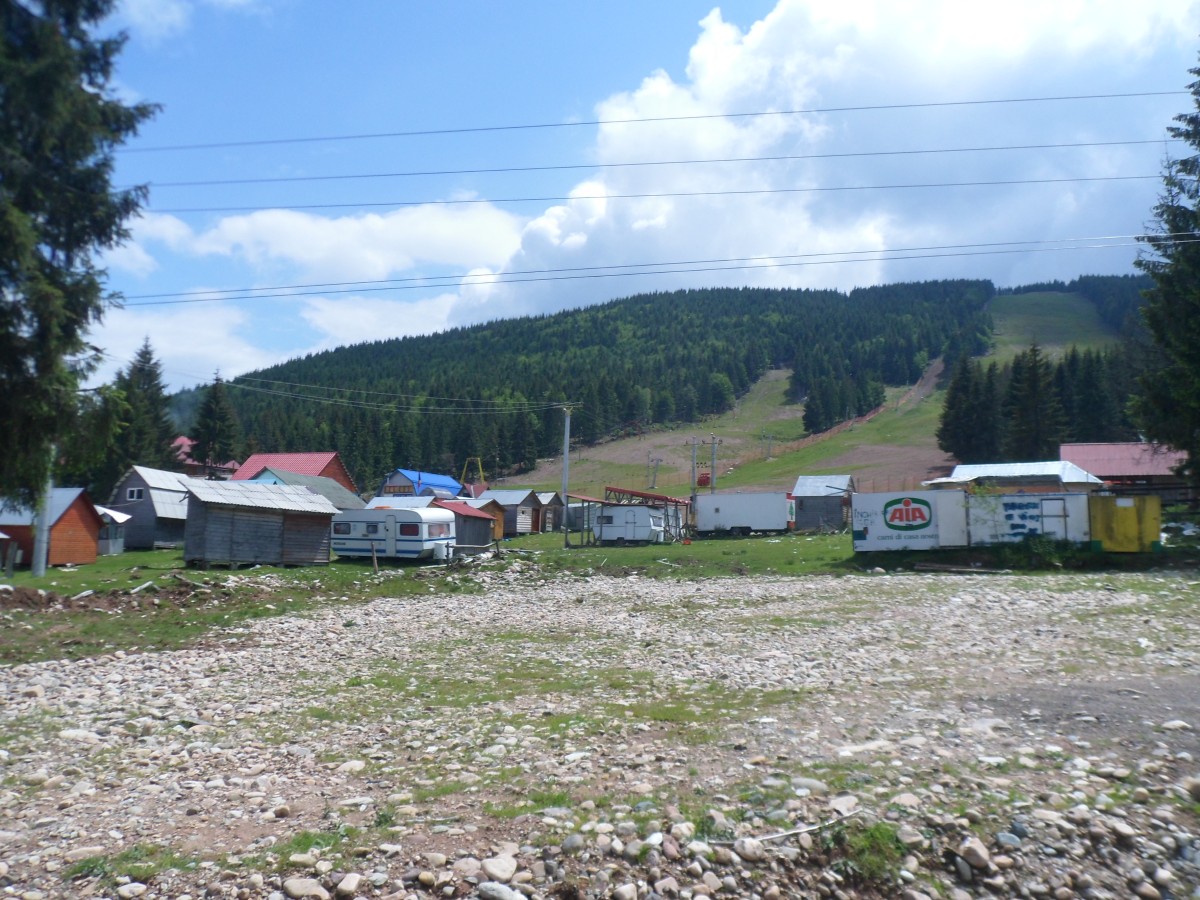
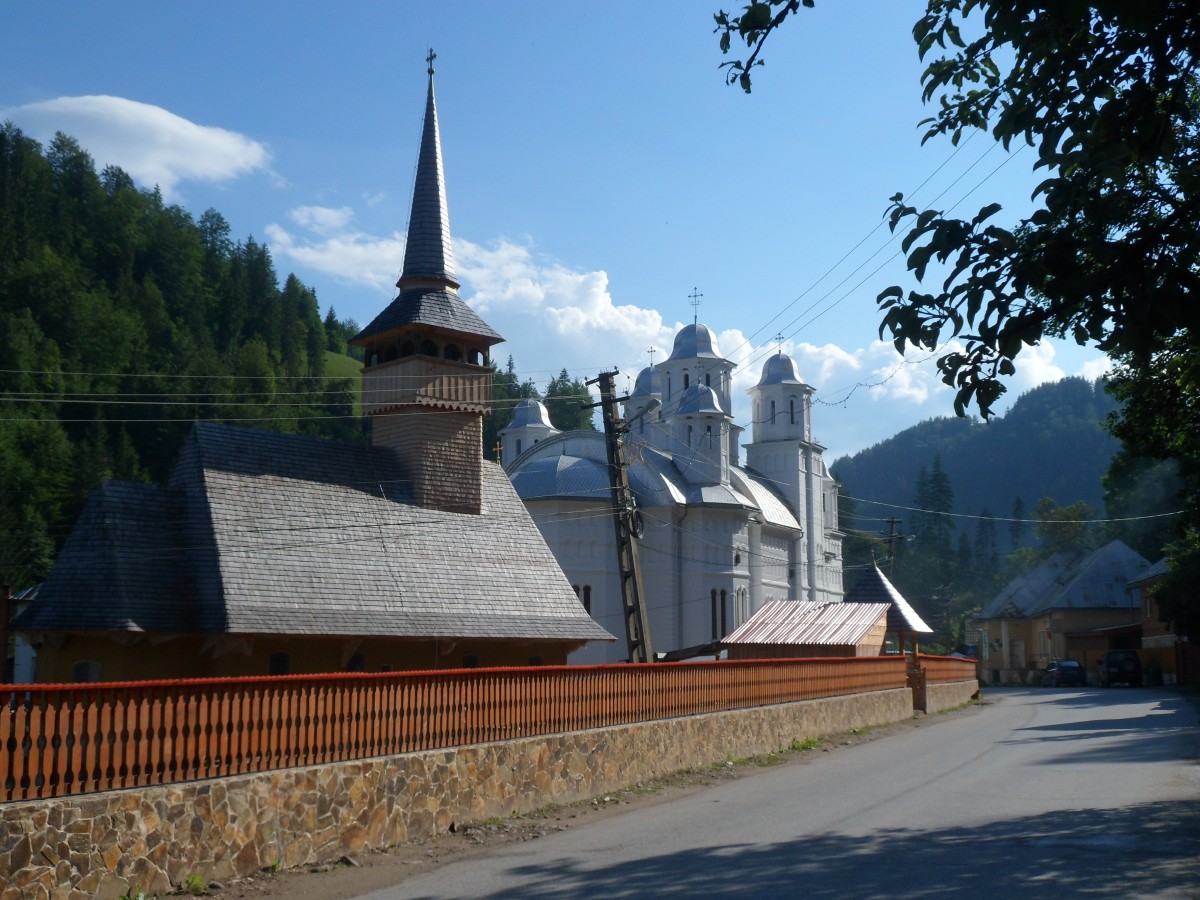
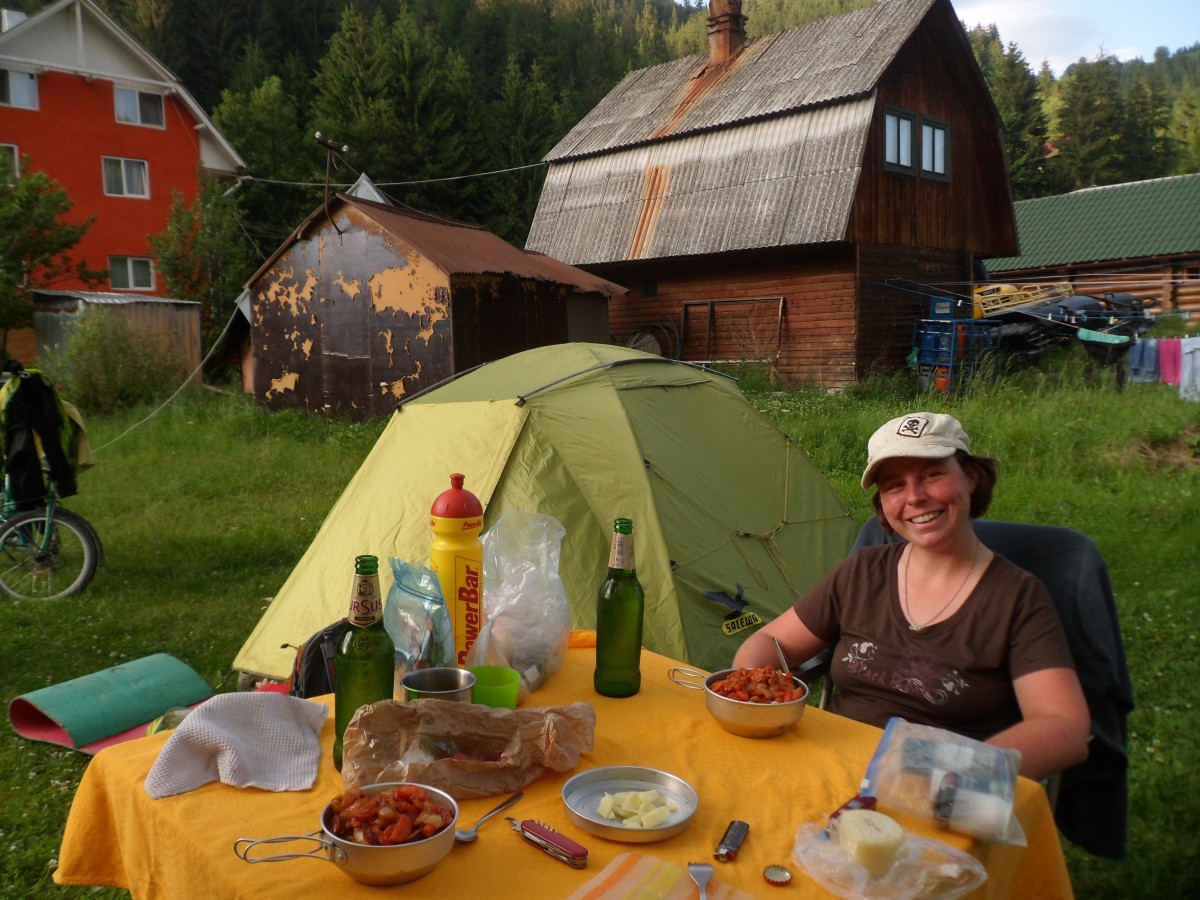
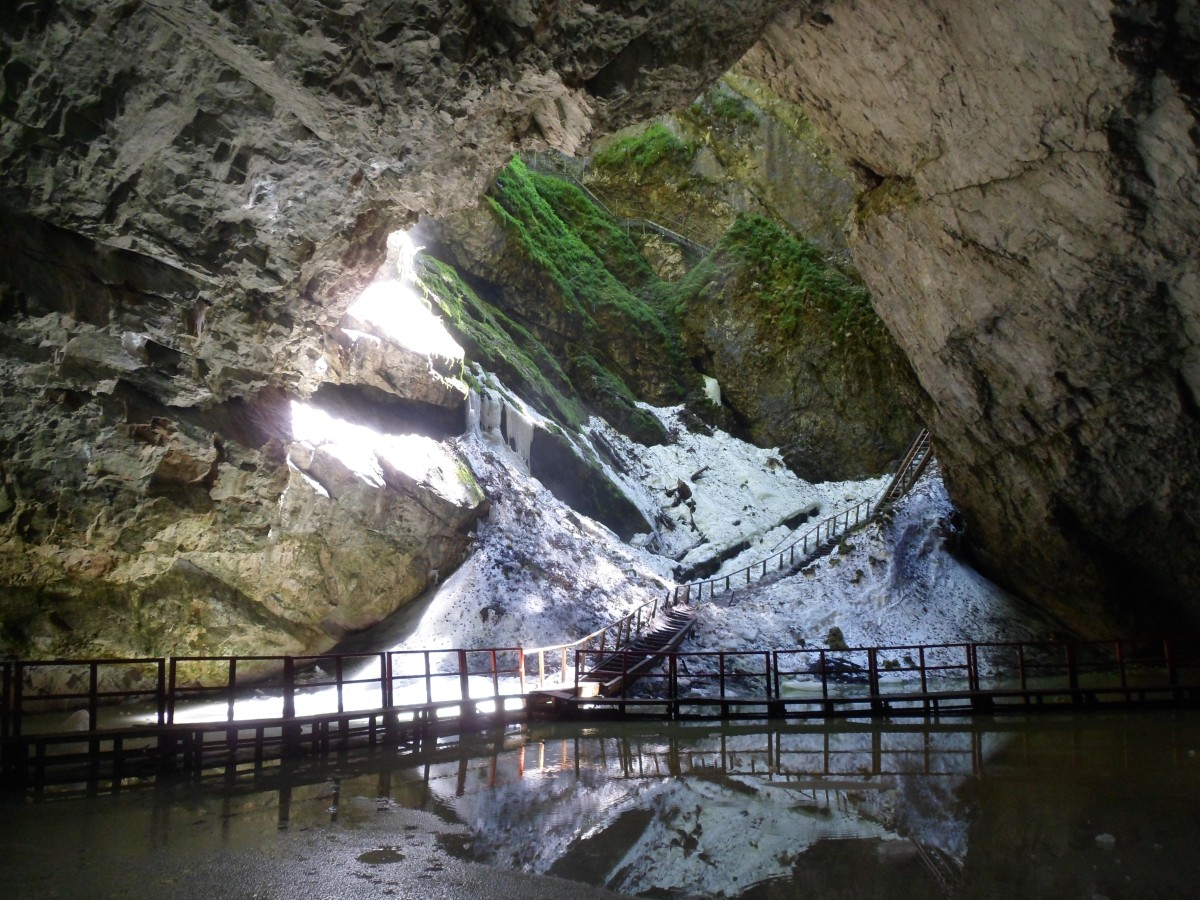
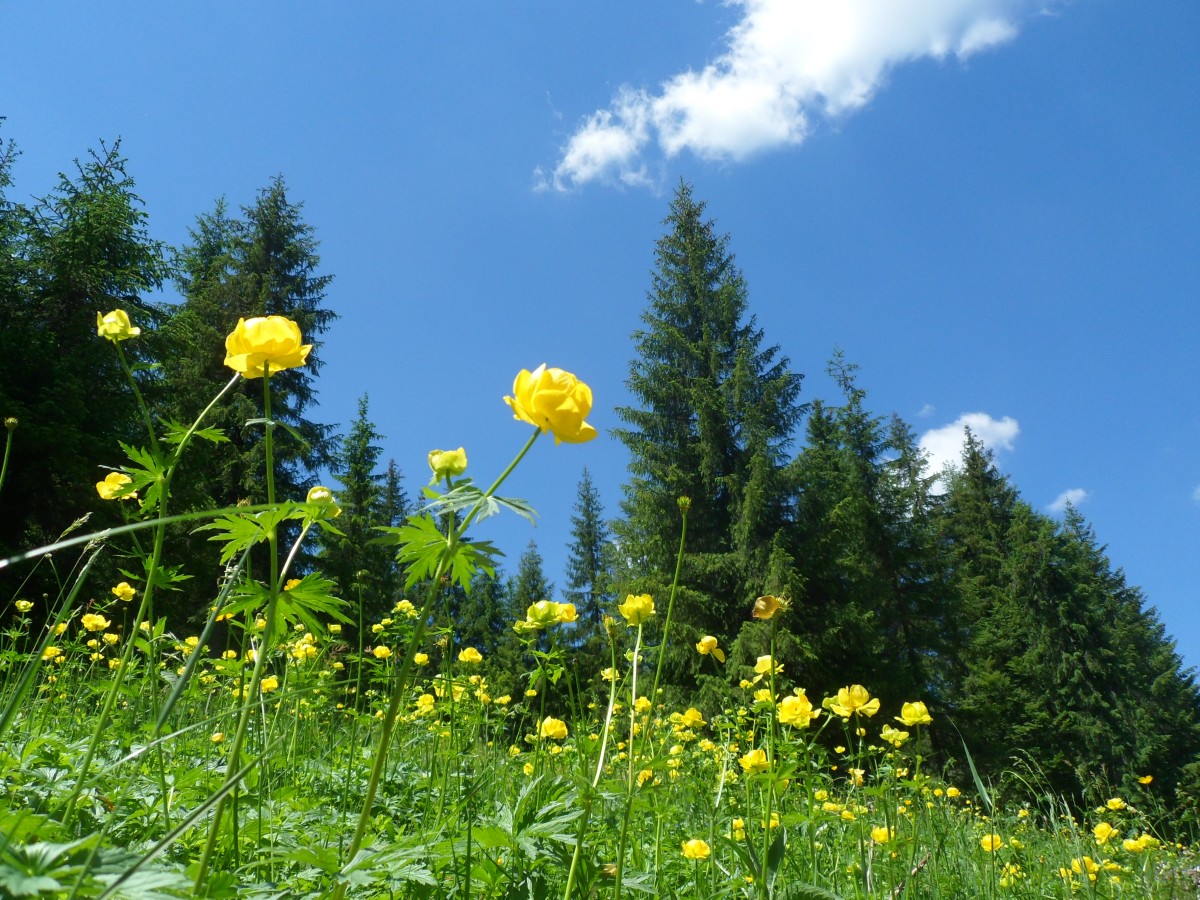
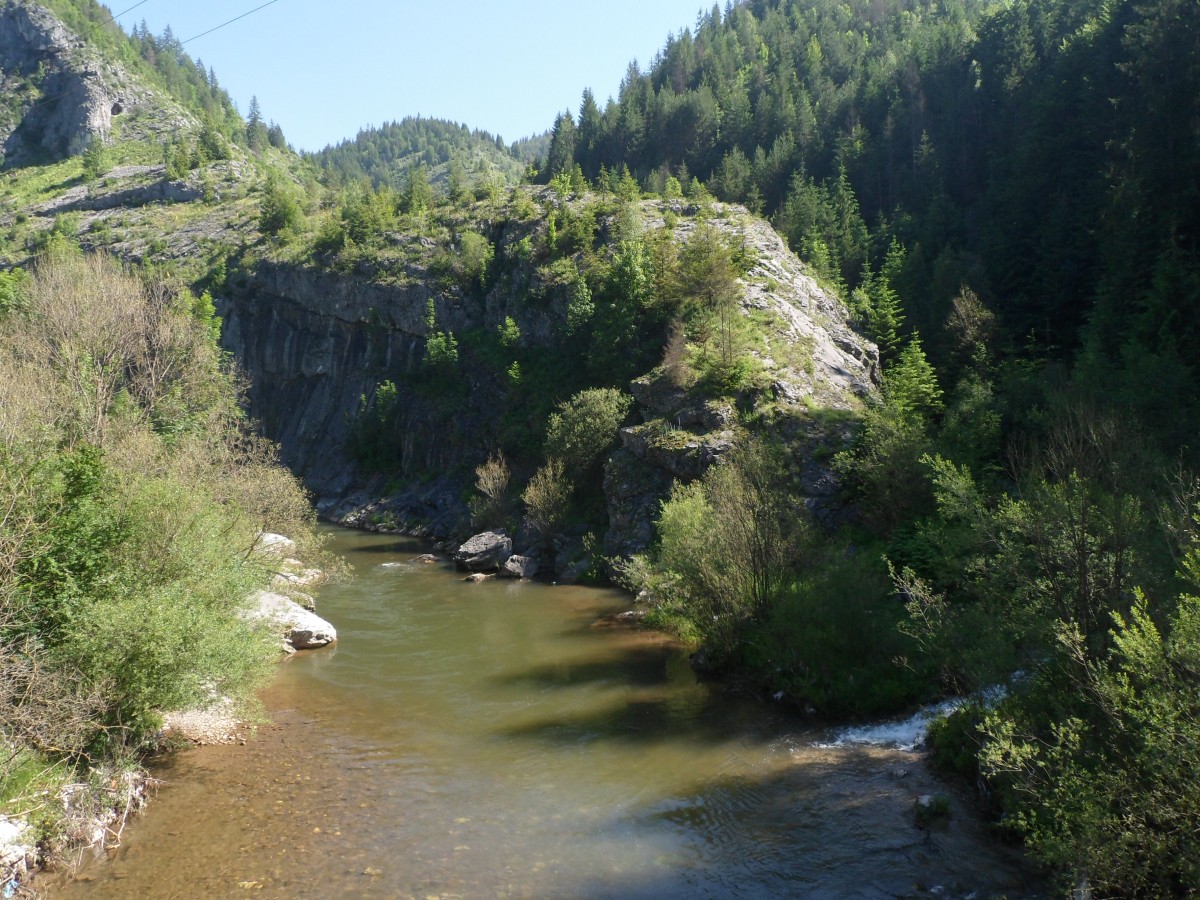
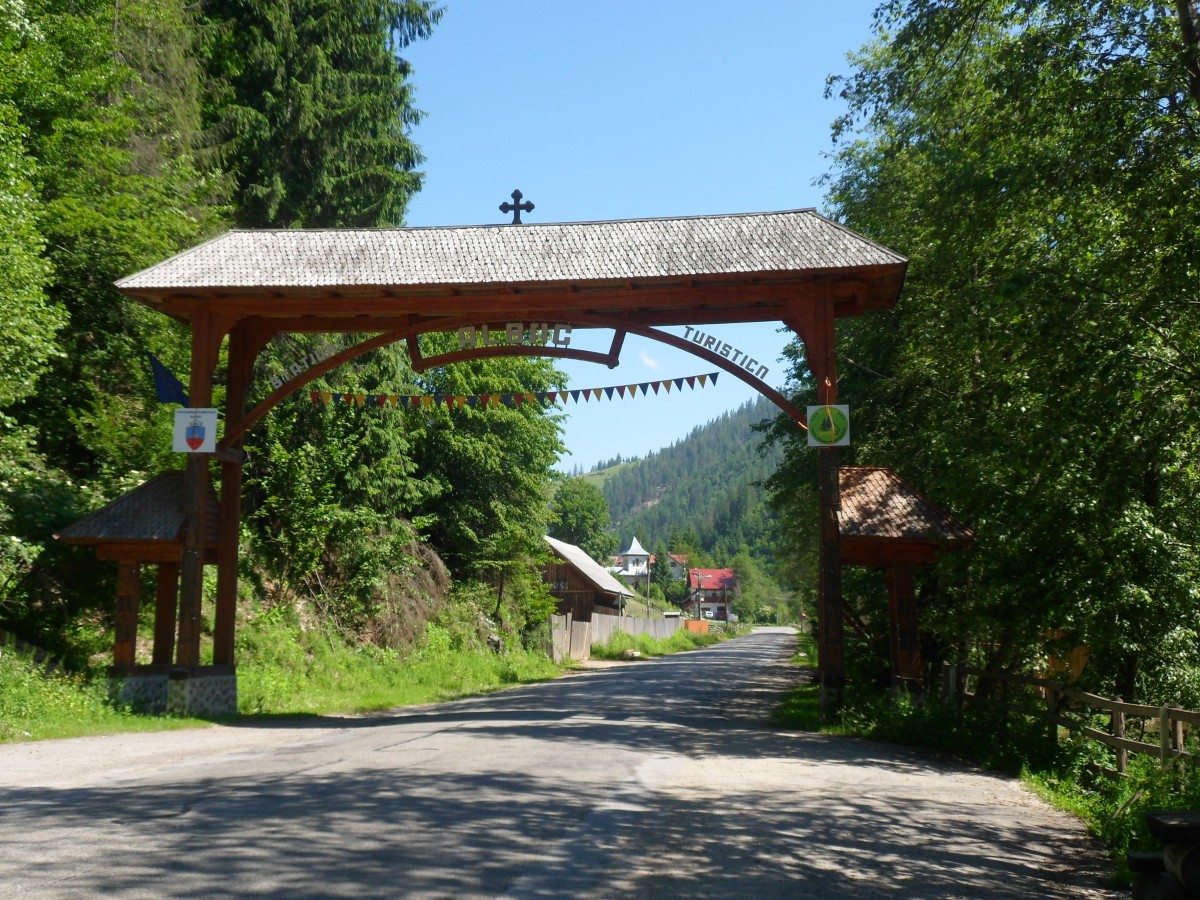
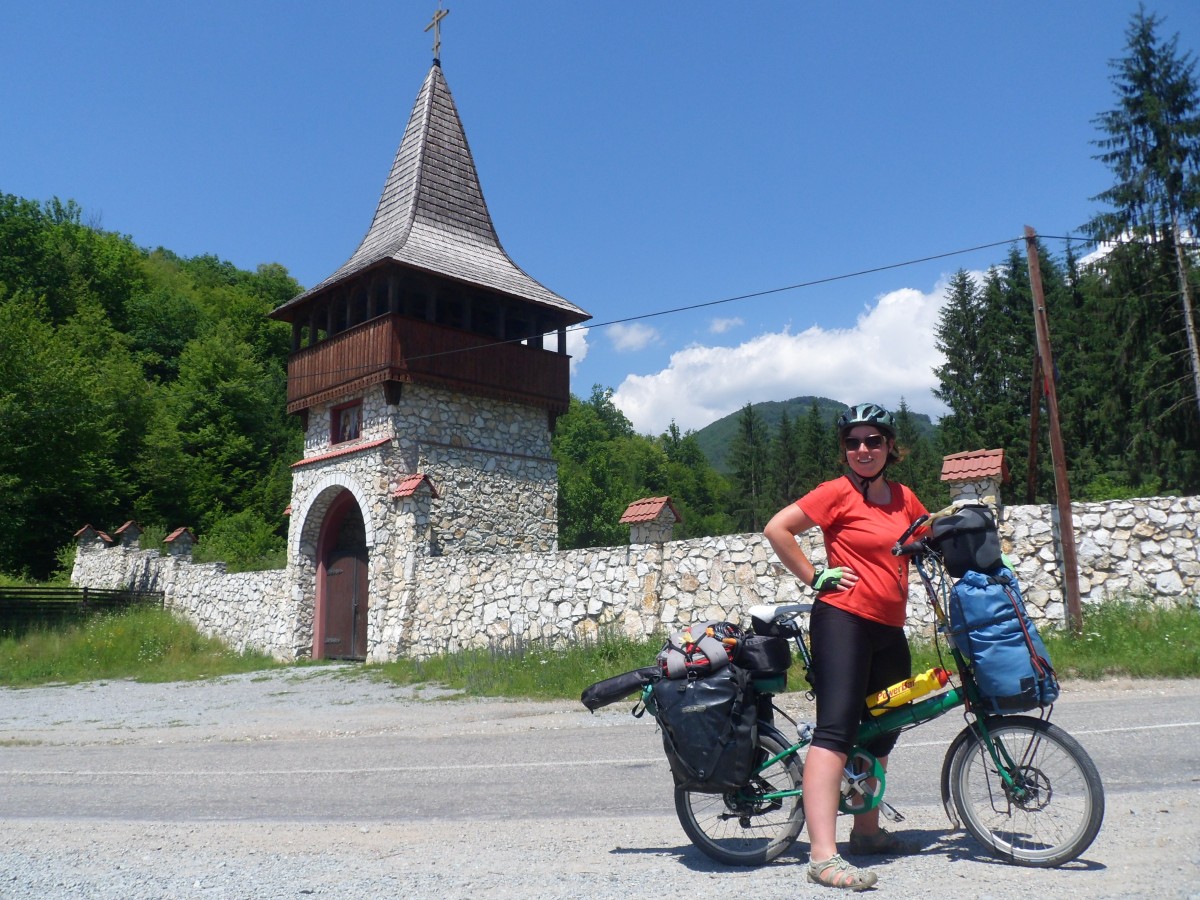
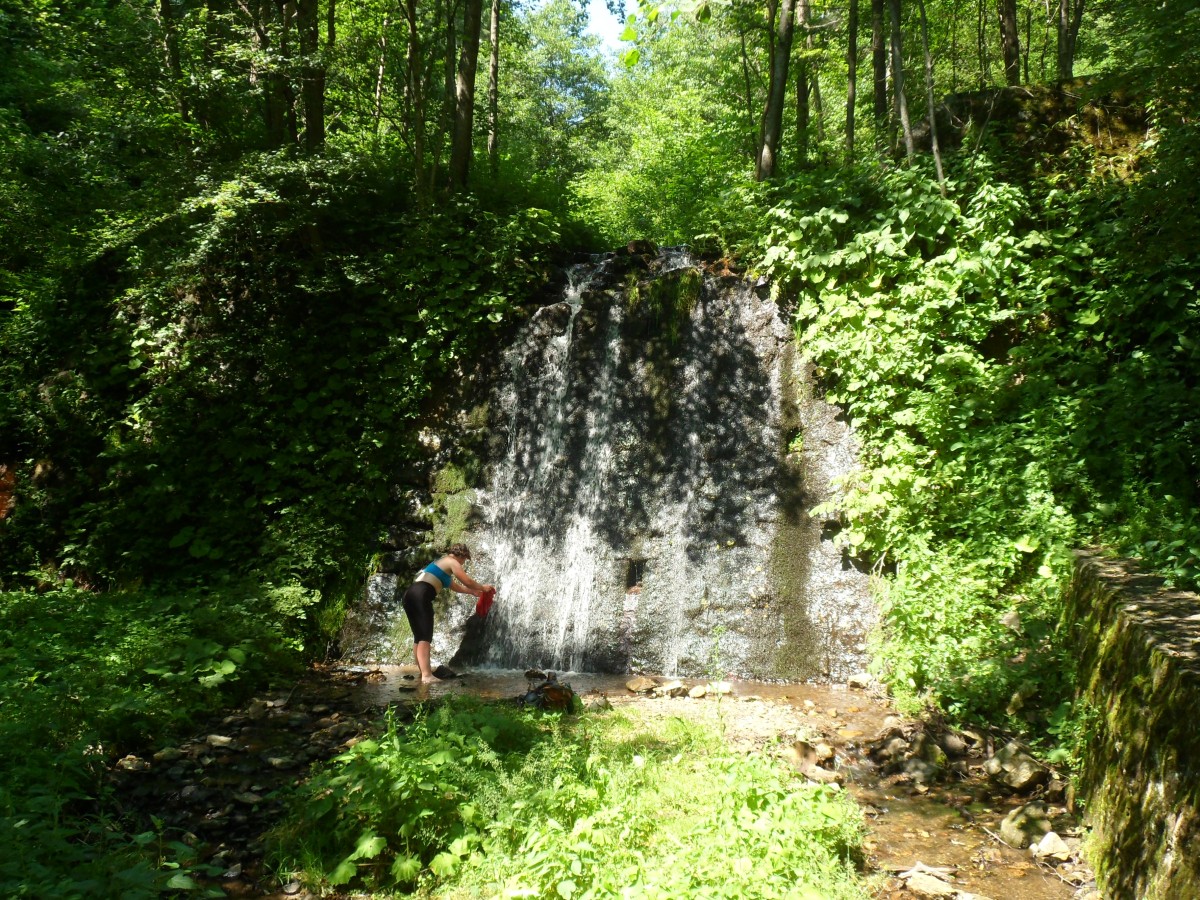
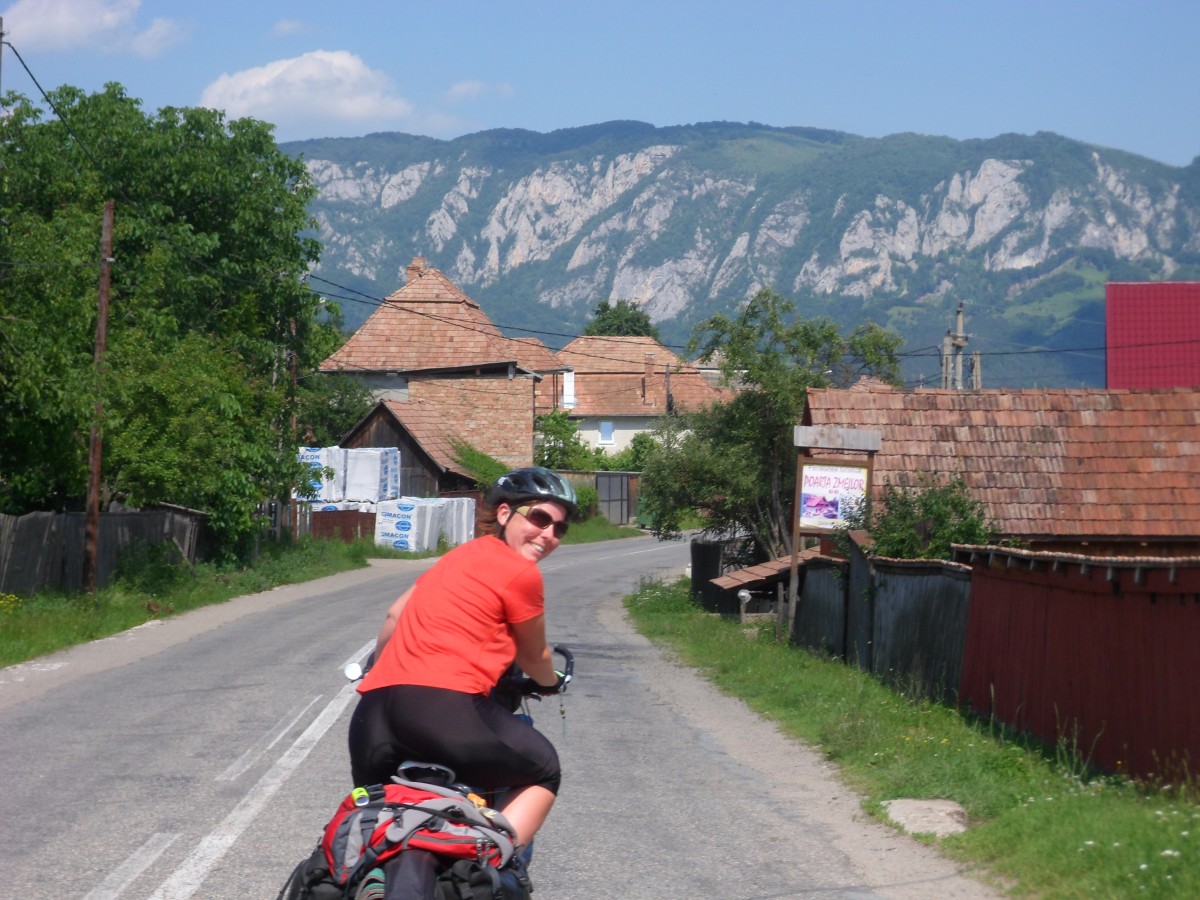
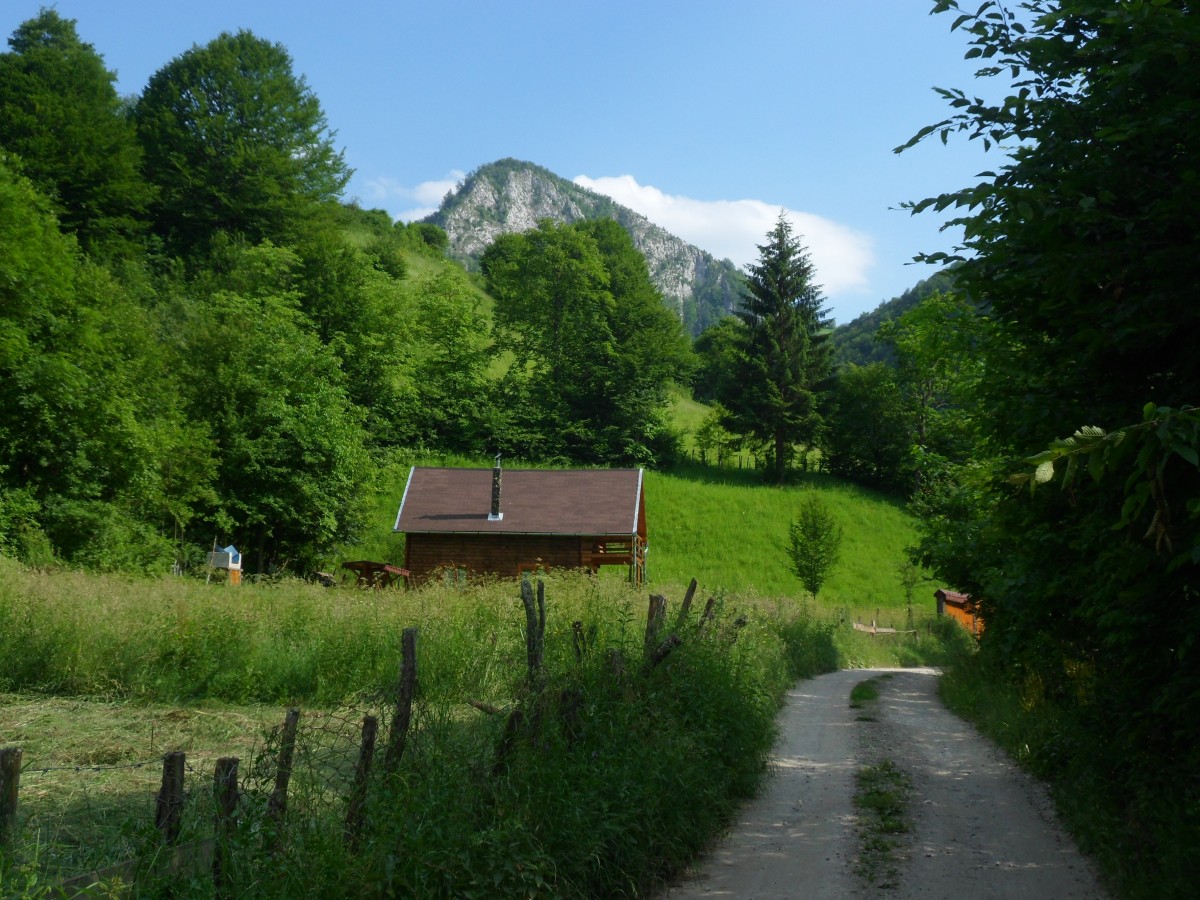
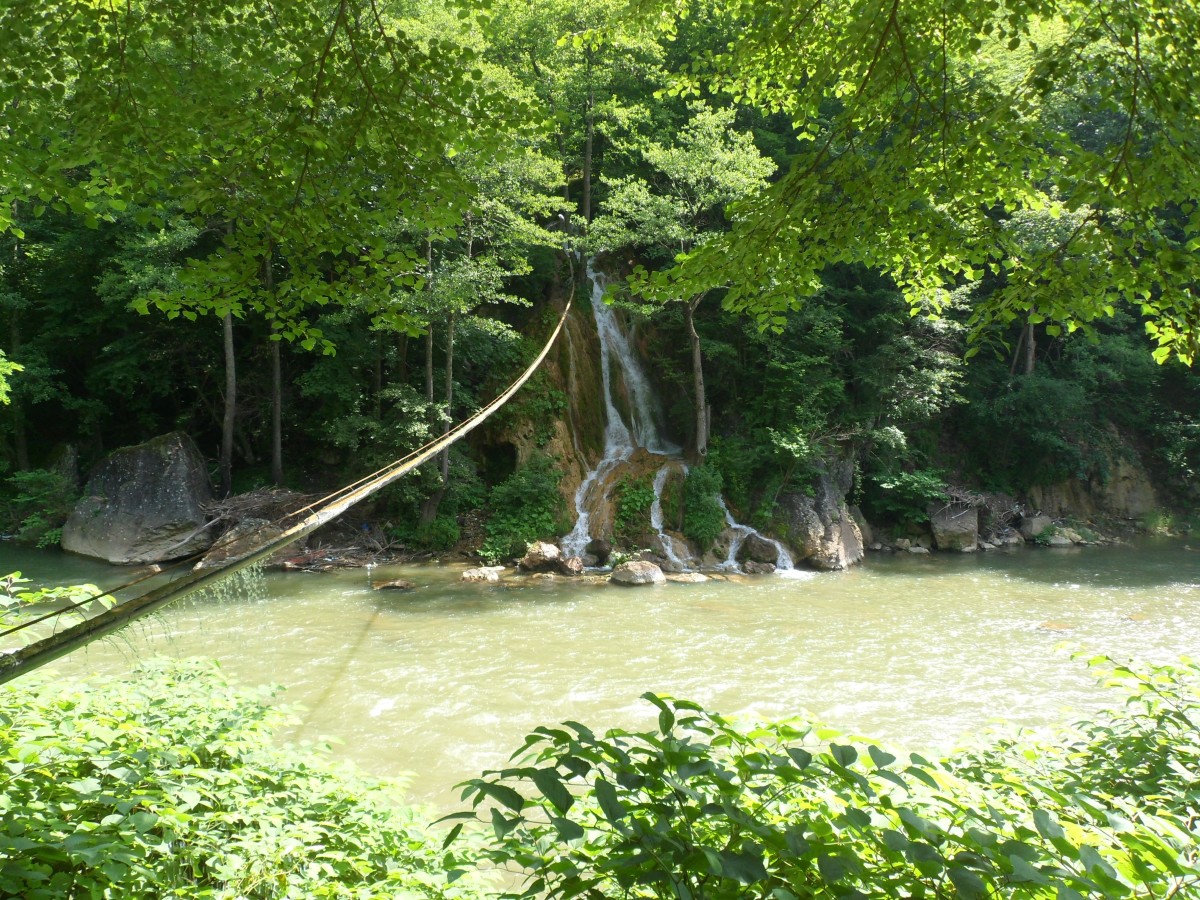
Pictures from Route 75: featuring Garda de Sus and Pestera Scarisoara
The Turda gorge with its 200 meter high limestone walls feels somewhat like the Californian Yosemite valley. The main trail through the gorge is just a few kilometers, but definitely worth the visit. We zip along the E60 to Sighisoara. Lots of new built houses indicate a prospering country, or rising private debts? Comparing the high petrol prices to the average income of approx. 200 Euro per month, I keep wondering how the people can afford driving a car, not to mention to buy a new one.
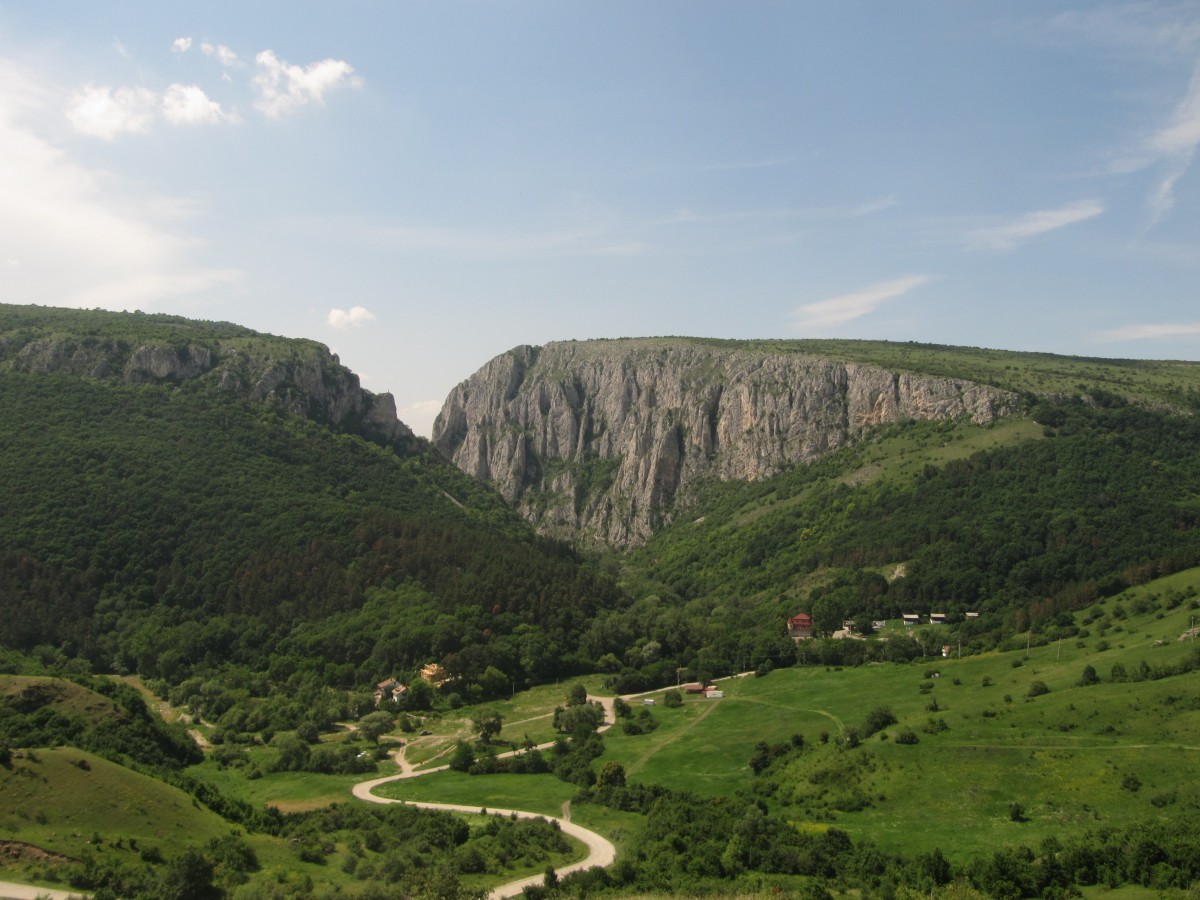
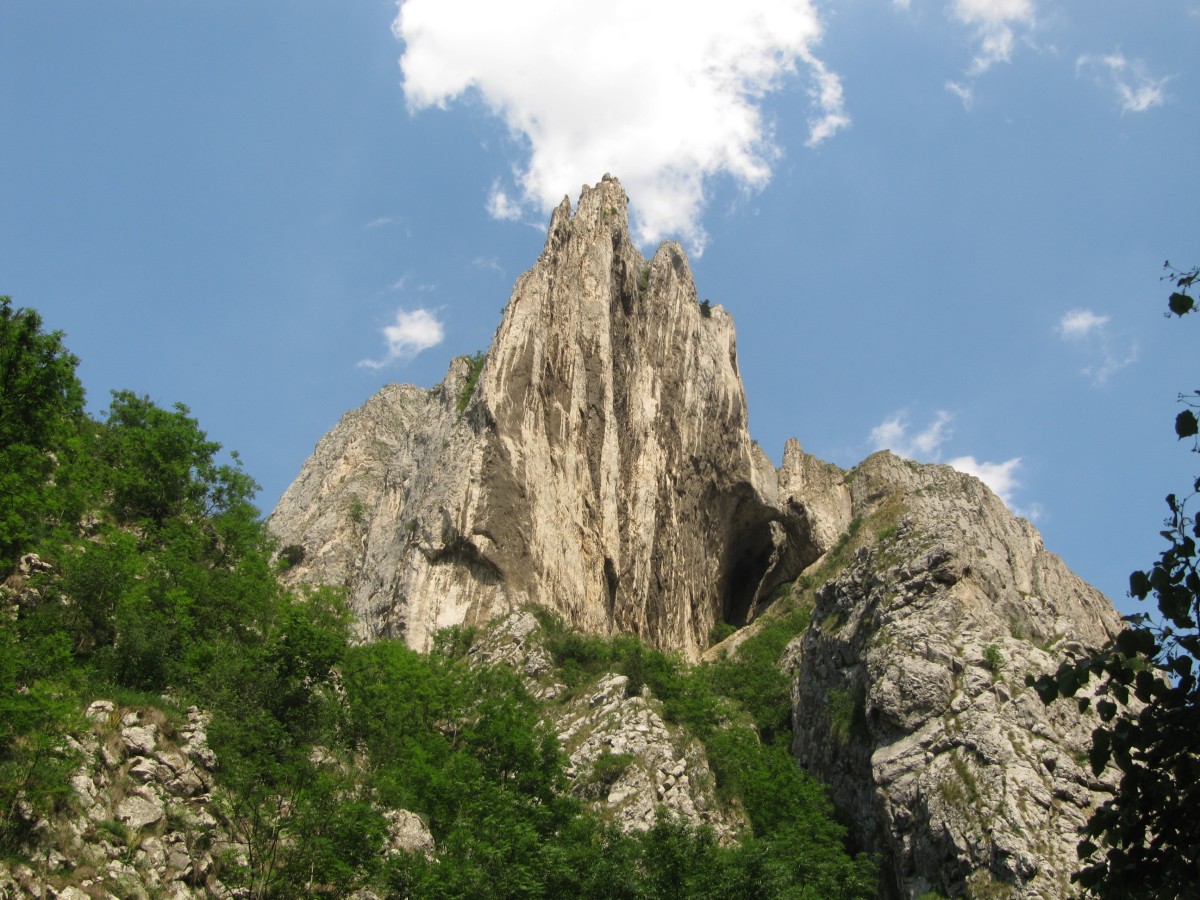
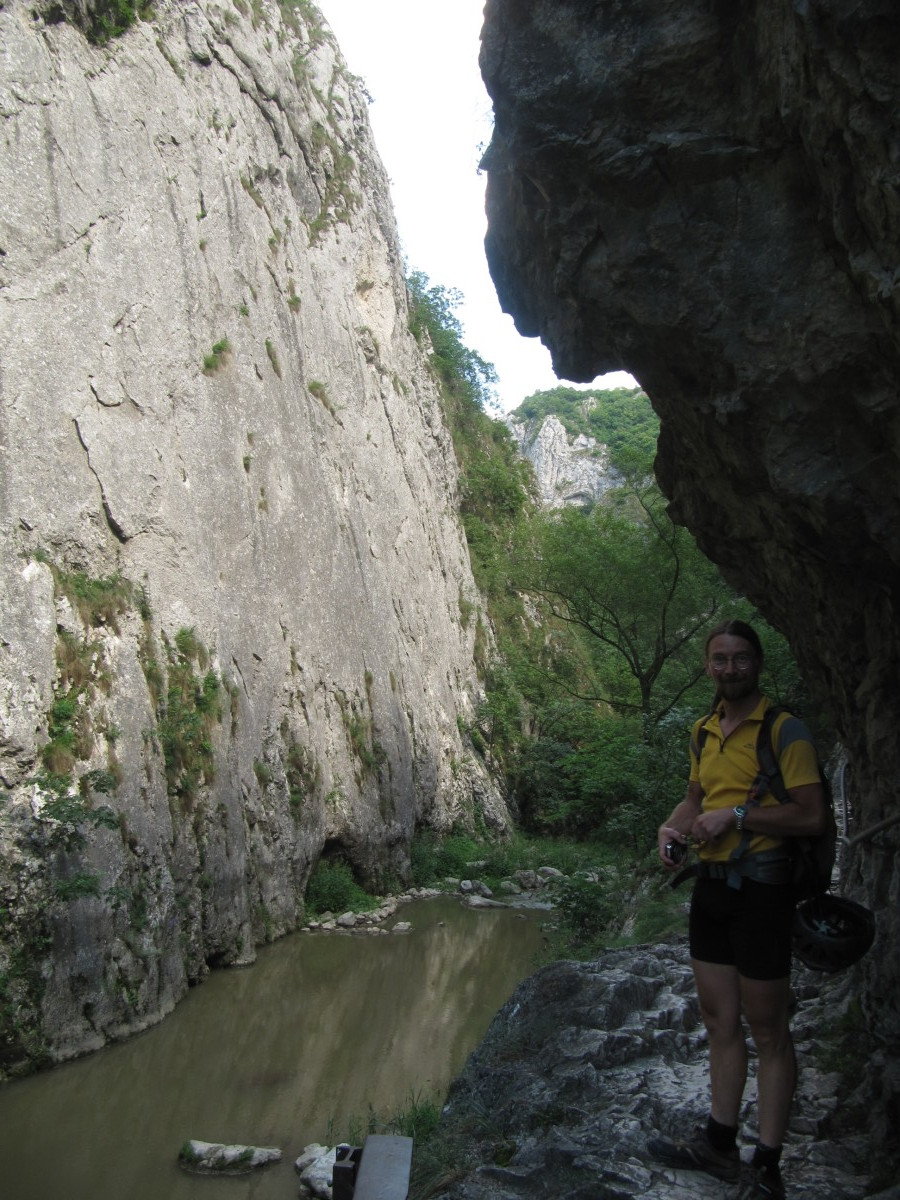
Cheile Turzii near Turda - not just a climbers paradise!
Sighisoara used to be a center of the Saxon settlers. The fortified medieval town on a hill has been declared World Heritage by the UNESCO and is well conserved. Suddenly there are streams of tourists. Beside the towers and town walls, the historic house of Count Dracula attracts the crowd. Sighisoara is surrounded by a number of fortified churches to protect the Germans from the attacks of the Turks. Bierthan is one of them, located some 20 kilometers away in a lush hilly area. The church is surrounded by three wall rings, and never fell, as the guarding woman tells us. There are only a few very old Germans left here, she says - the younger ones mostly left for Germany after the fall of the Ceausescu regime. In the past, famous wines grew on now fading terrace fields she says with a somewhat mourning voice.
Near the village of Bradeni we spot a stork gathering. Dozens of the big birds flock between two fish lakes. Here we are invited to camp in the orchard of Greg and Christina. They are both teachers and enjoy hosting bicycle travelers. Their three boys help a lot on the farm and with the two cows. At night we talk a lot about Romania's past, about the German settlers and gypsies and the changes after Ceausescu. The Germans would only allow their kind into their fortified churches and cities. And they employed the gypsies. Now that the Germans left, the gypsies gained some of the houses and lack employment and motivation. Other buildings are still remote-controlled by German church institutions far away. The EU spends hundreds of millions for tourist roads, while the local government lacks money for school books. Actually, we are headed for one of these tourist roads over the Carpatian mountains next.
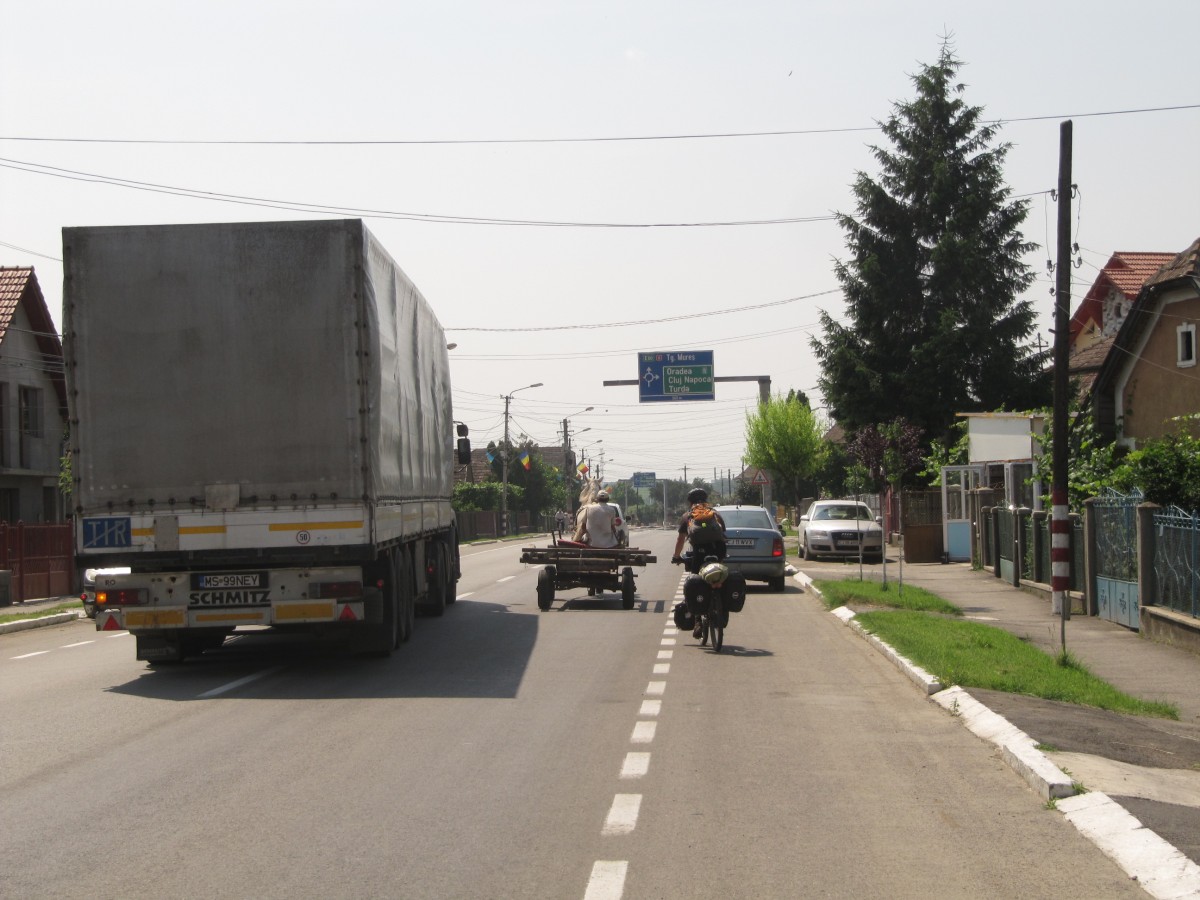
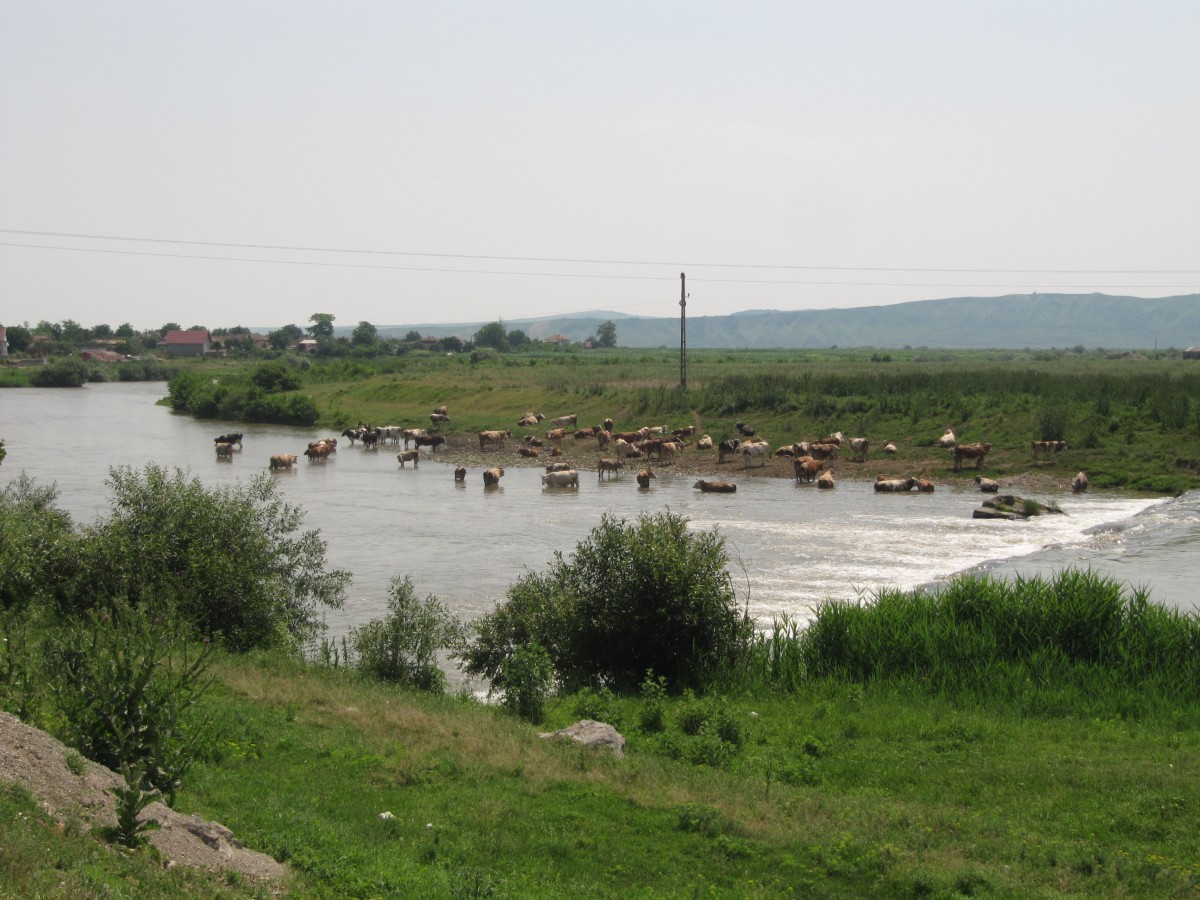
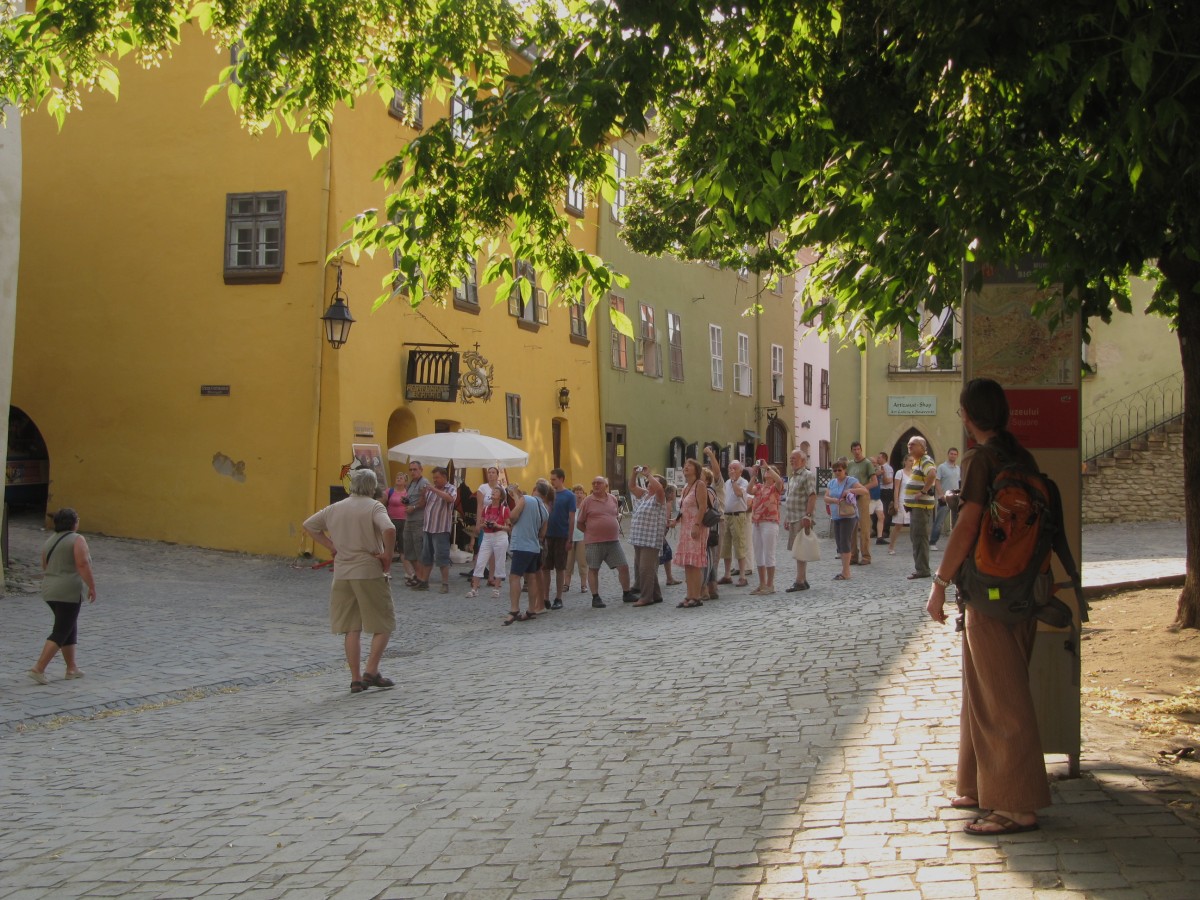
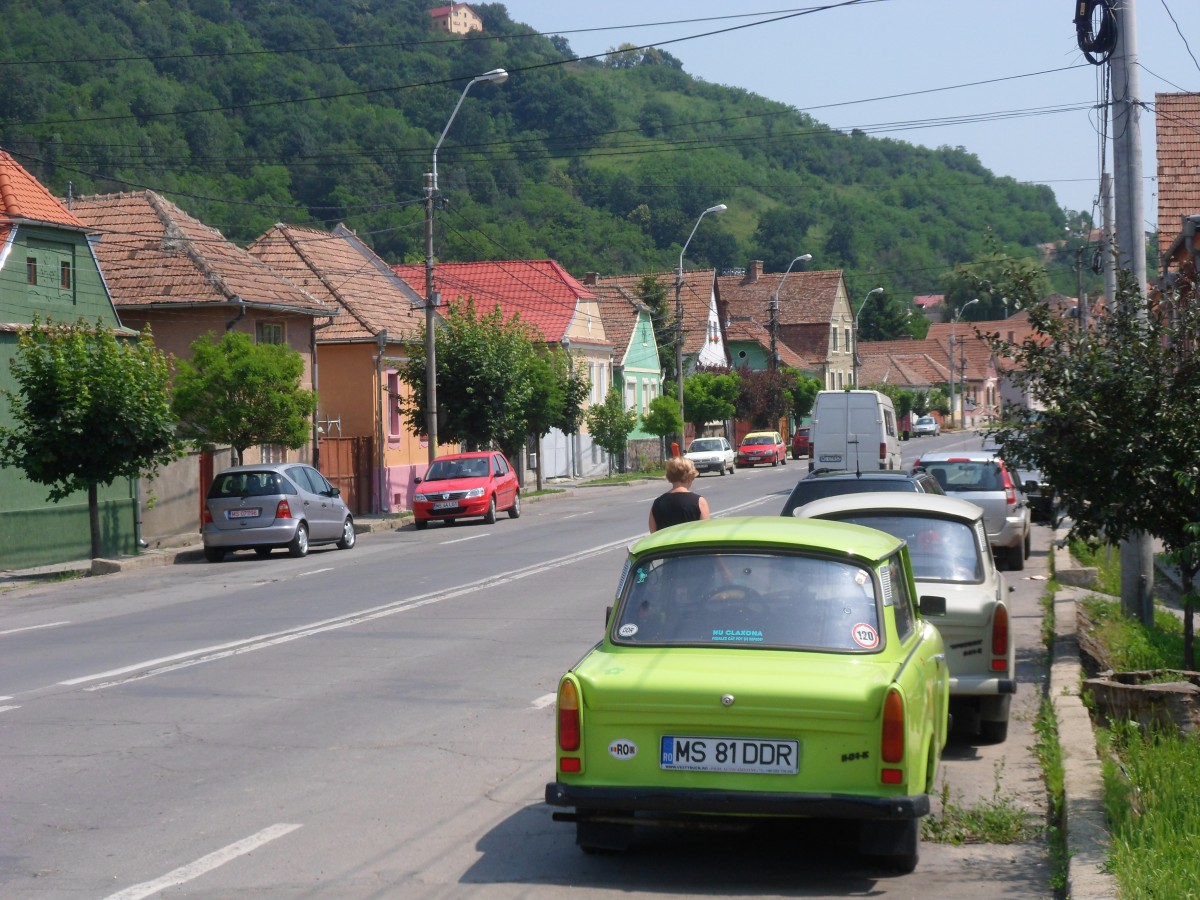
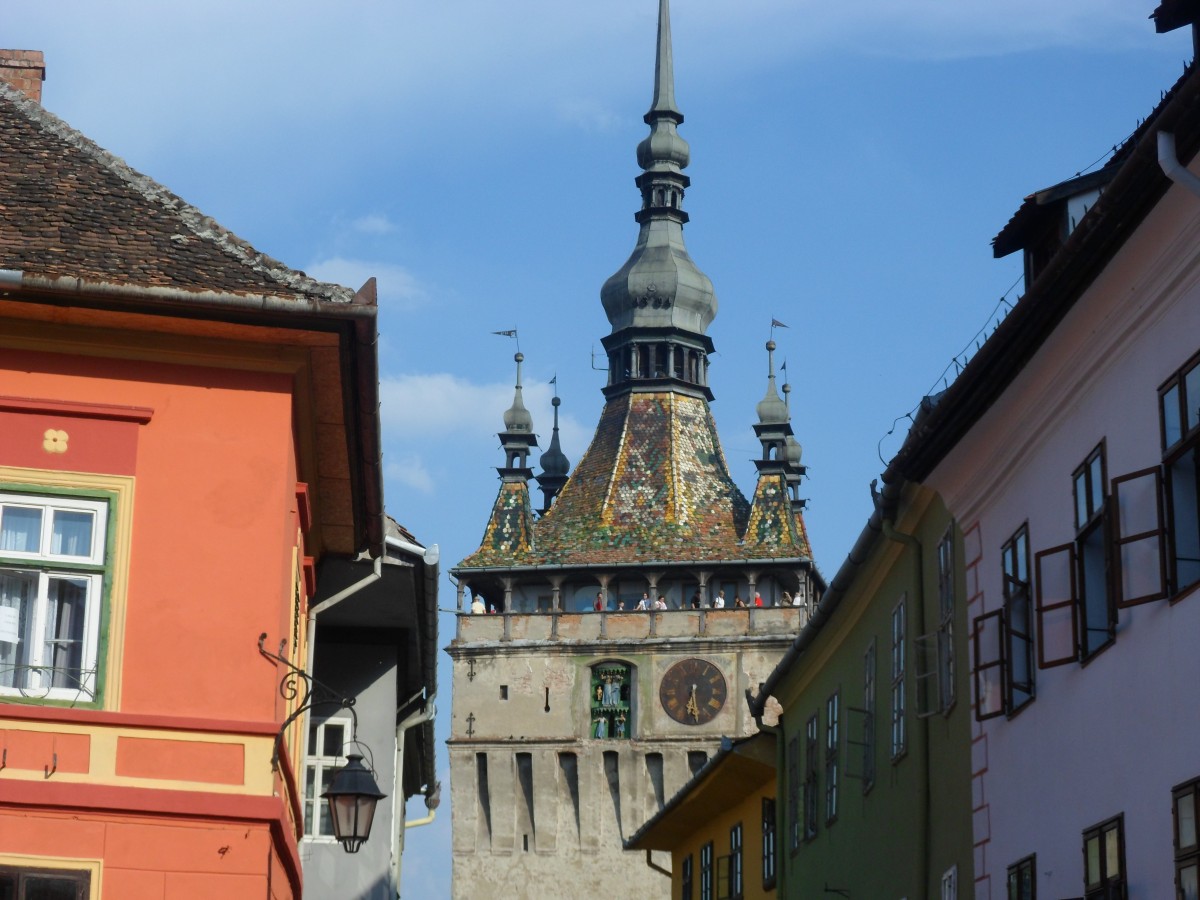
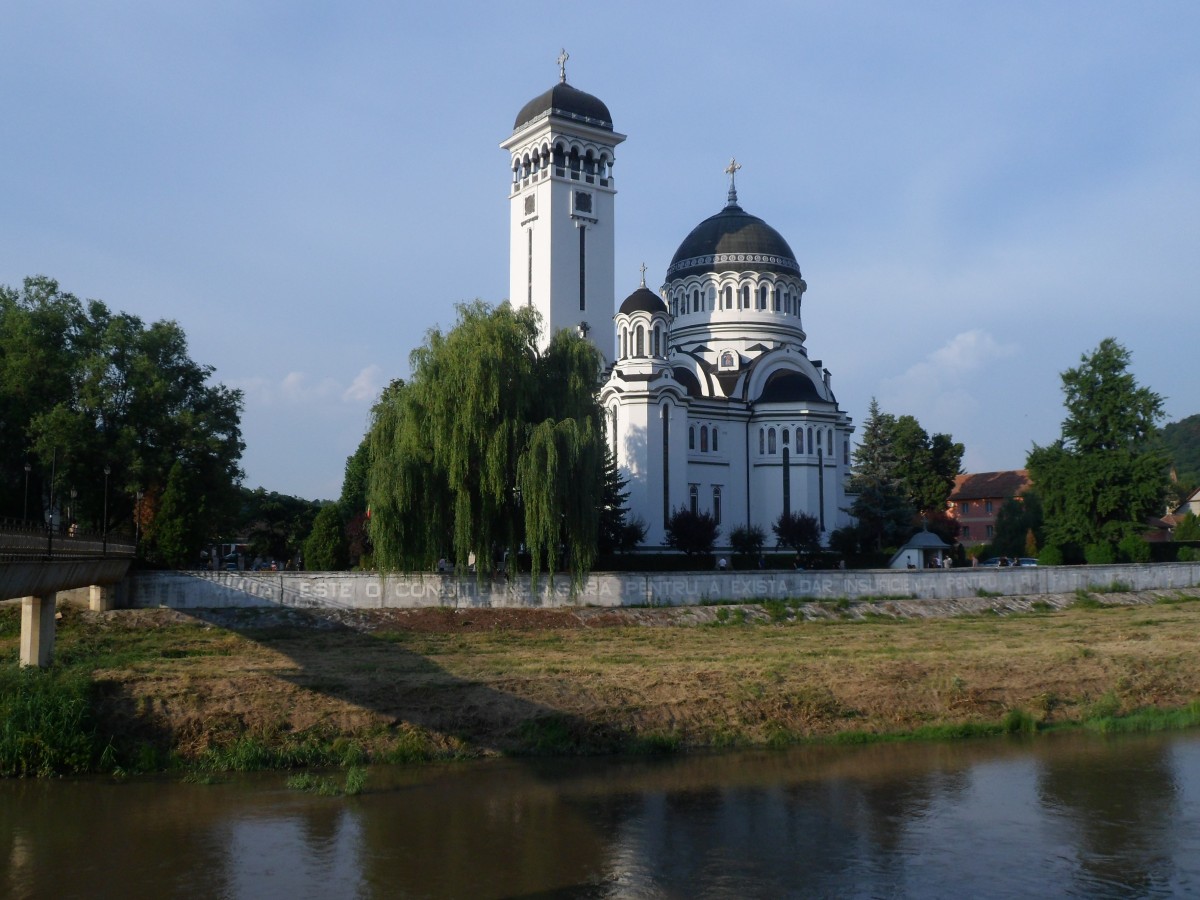

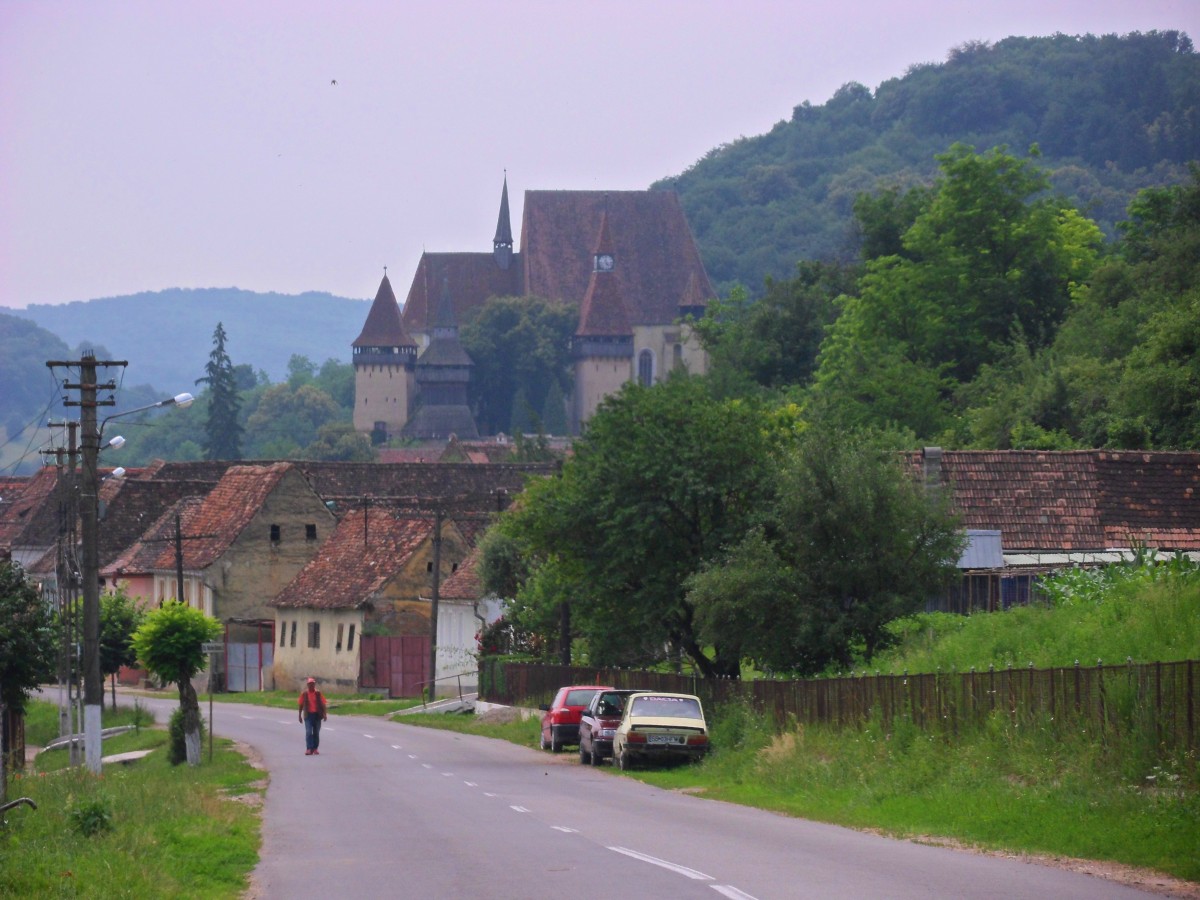
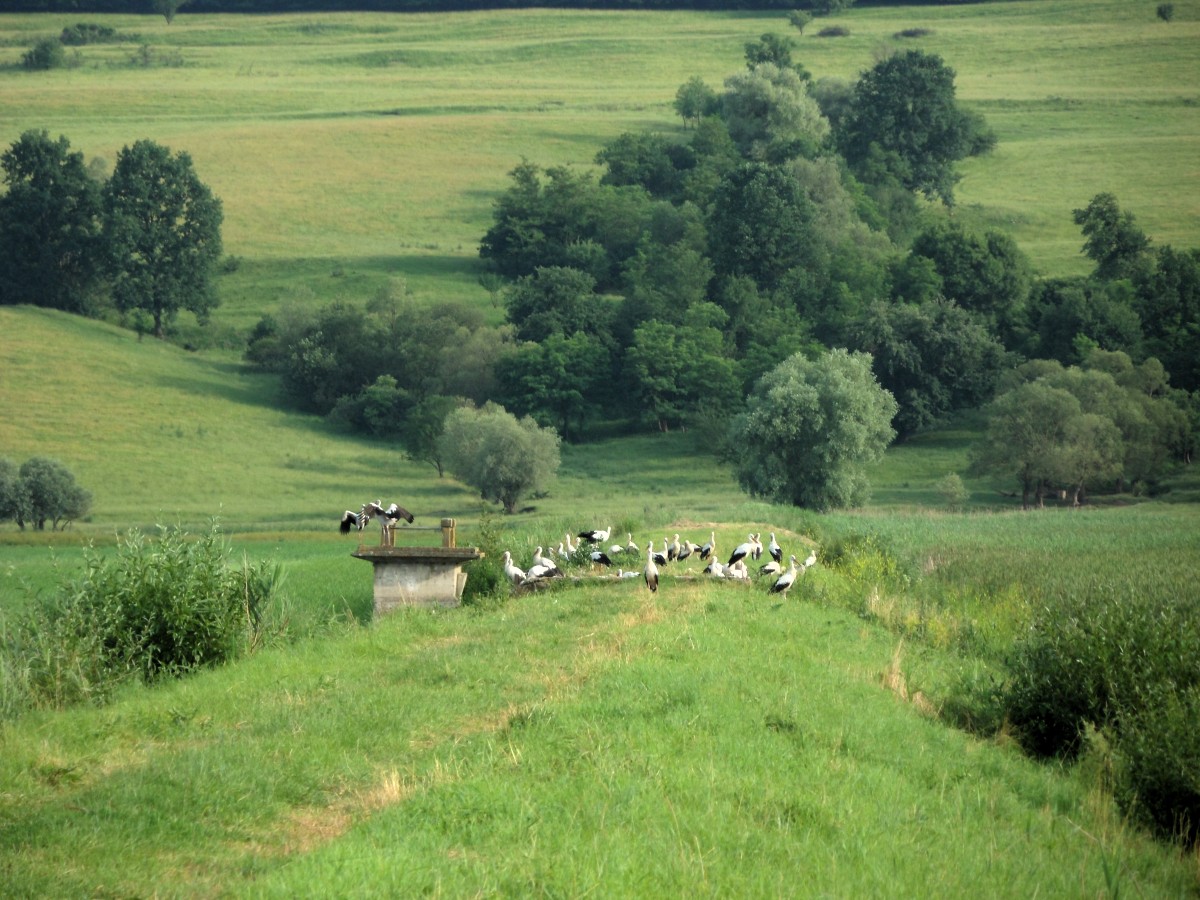
Surviving the heat and the streets of Transilvania, Sighisoara and Bierthan